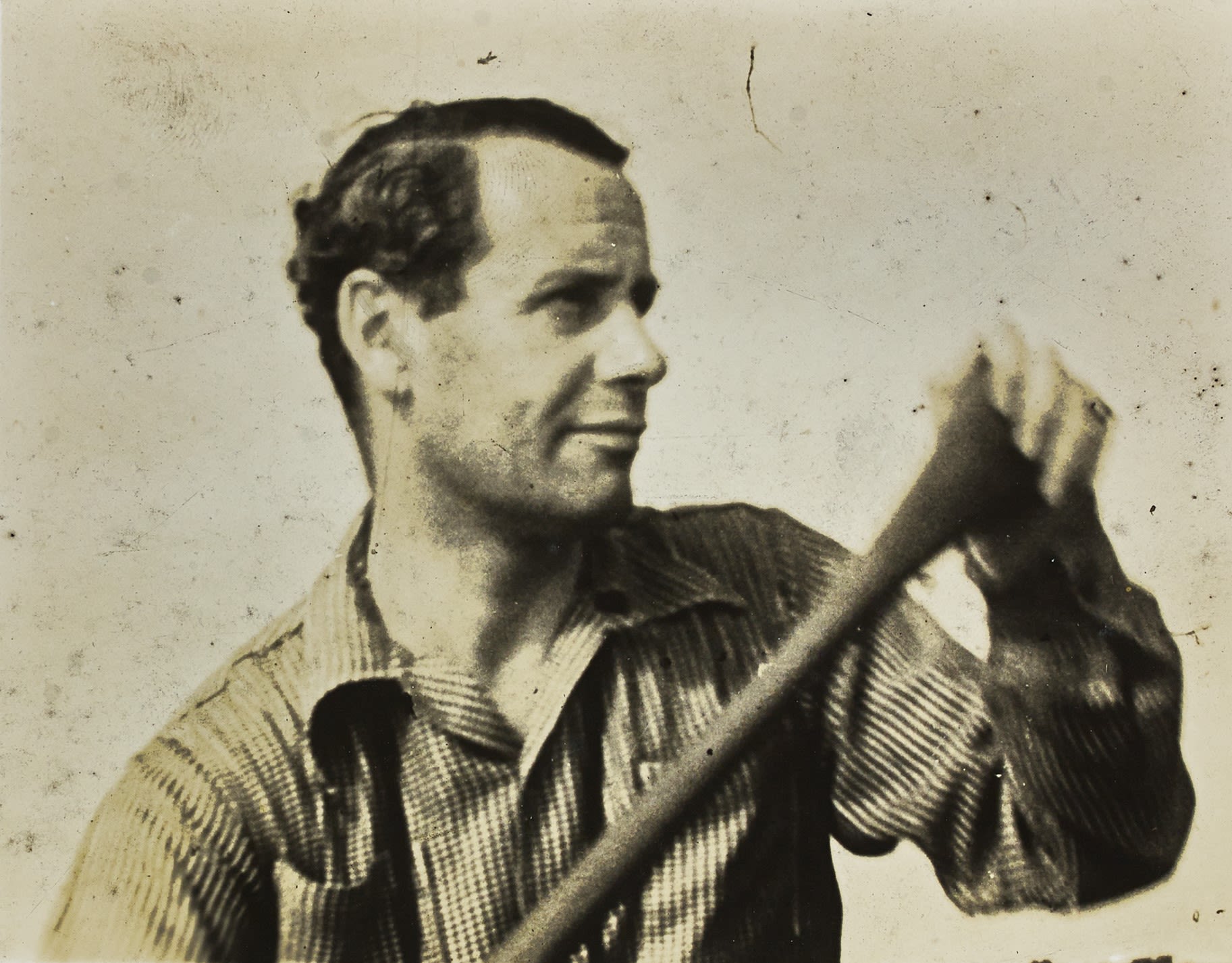Beauty and Diplomacy
The Malcolm MacDonald Collections
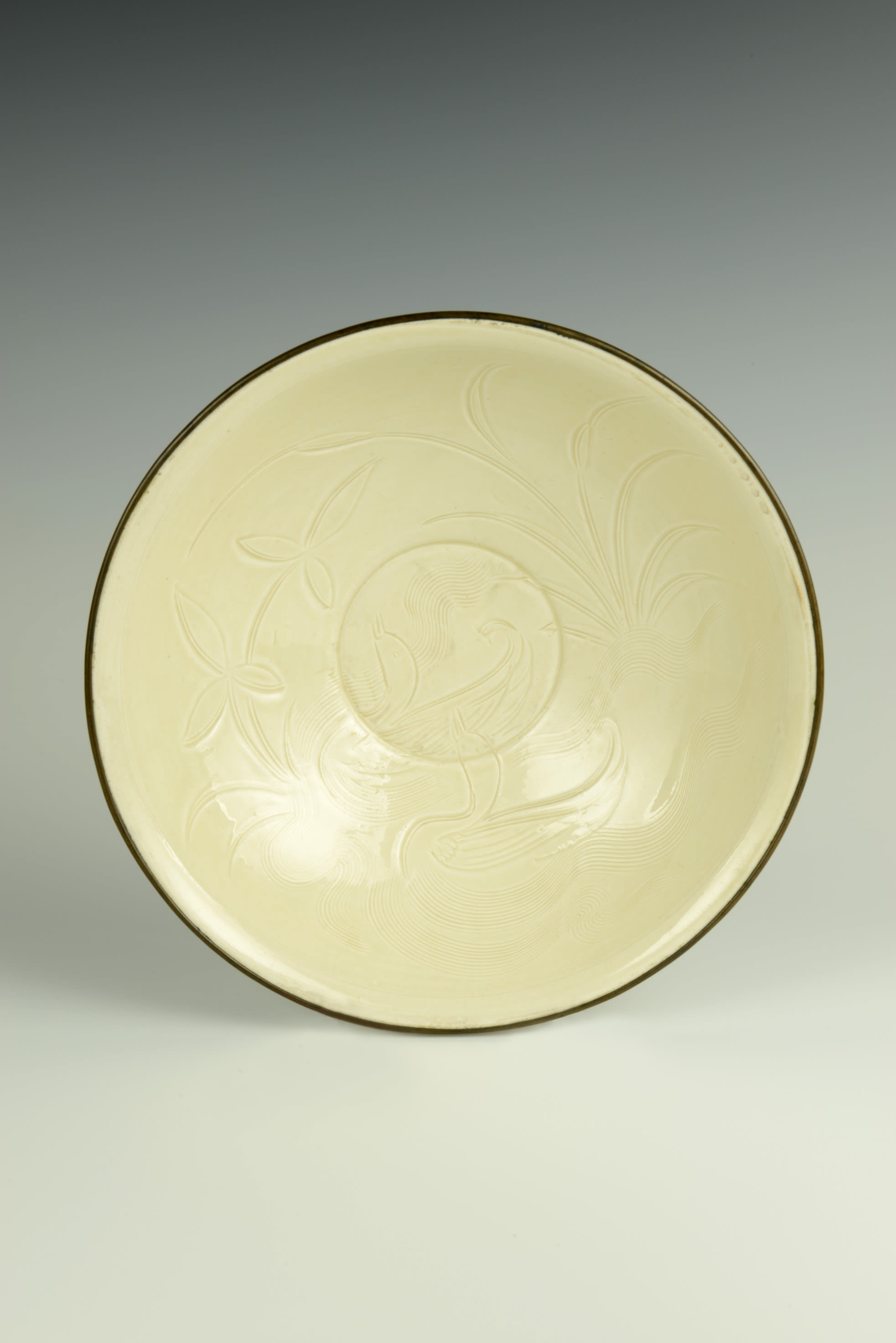
Adventurer

Collector
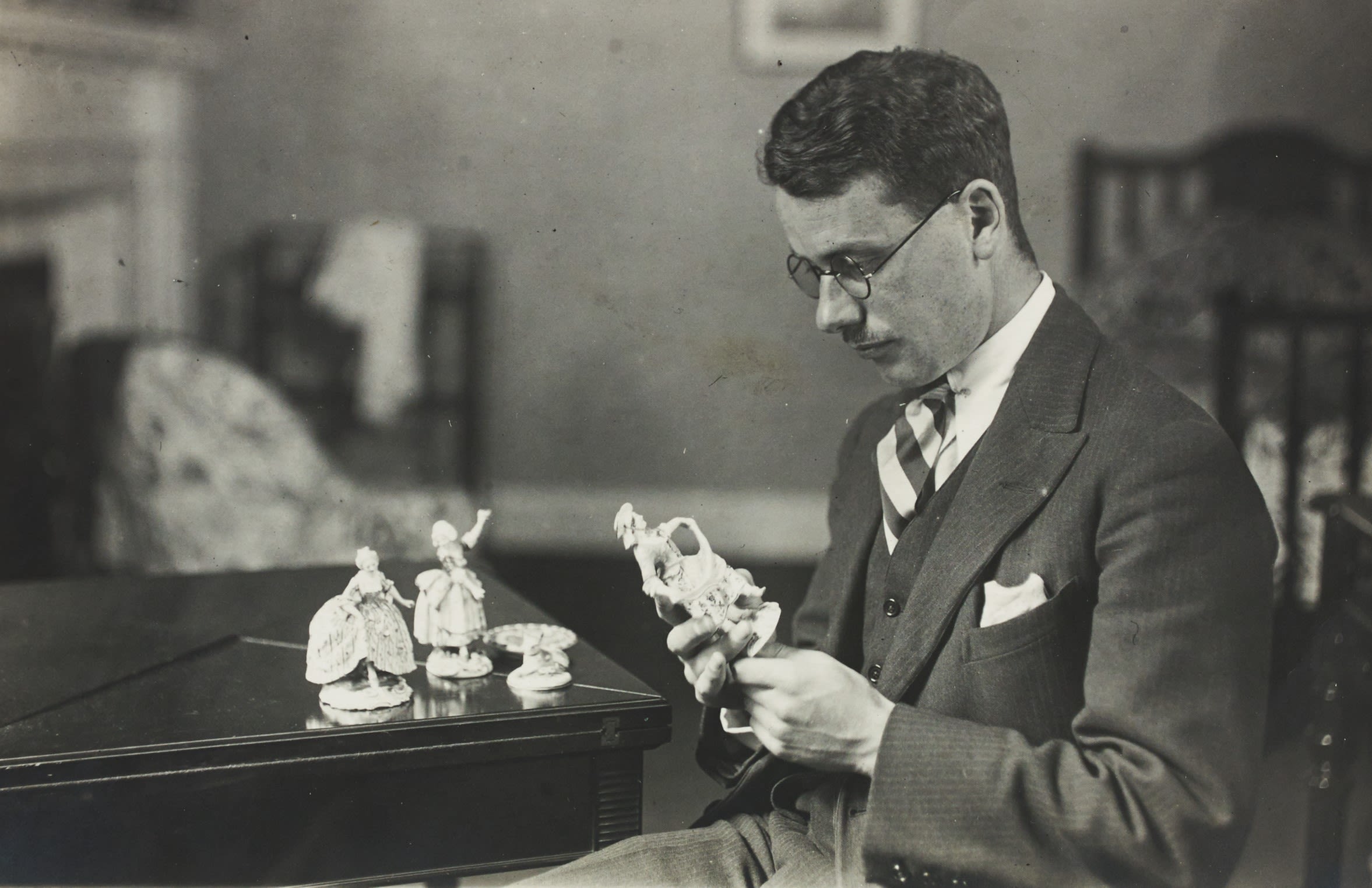
Diplomat
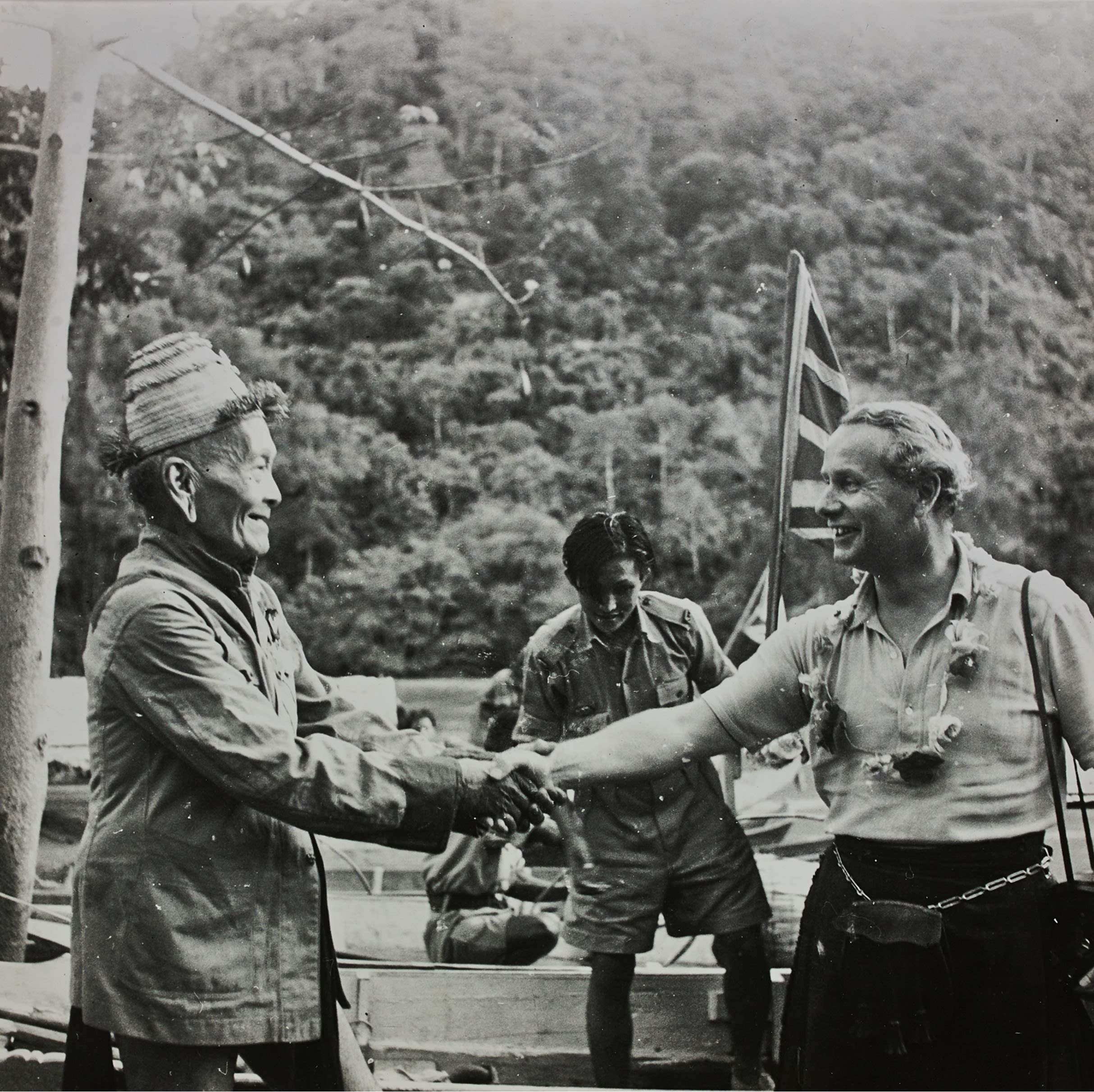
Malcolm John MacDonald (1901-1981) was a British politician, diplomat and colonial administrator. He was also an important collector and enthusiastic patron of the arts.
At first devoted to Western art-forms, his work overseas inspired Malcolm with new conceptions of beauty from the cultures of Asia and Africa. The pursuit of beauty governed all his collecting, whether landscape paintings by Turner or the intricate silverwork of Brunei.
The son of Prime Minister Ramsay MacDonald, Malcolm served as a cabinet minister in the 1930s before his first diplomatic posting to Canada. In 1946 he was appointed Governor-General in Malaya. From 1948-1955, he served as Commissioner-General for South East Asia, co-ordinating all British diplomacy and colonial policy in the region.
An energetic and unconventional diplomat, Malcolm vigorously supported the peaceful end of Empire and forged new partnerships with Asian nations.
Malcolm’s appointment in Singapore provided the perfect opportunity to indulge his passion for the arts and soon Malcolm discovered his greatest collecting passion: imperial Chinese ceramics.
But art and beauty are not just about objects. Personal relationships were central to his success as both an eccentric diplomat and eclectic collector.
Malcolm MacDonald assembled an impressive variety of collections during his adventurous life.
He bought his first collectable in Paris at the age of twenty when he ‘fell in love’ with a porcelain shepherdess.
On his first trip to Japan, Korea and China in 1929, Malcolm was overwhelmed by the imperial majesty of sites such as the Temple of Heaven in Beijing. He also discovered an array of beautiful ceramics which greatly surpassed his European collection. As a young man with limited funds he was only able to purchase five items including this pair of Ming dynasty lions.
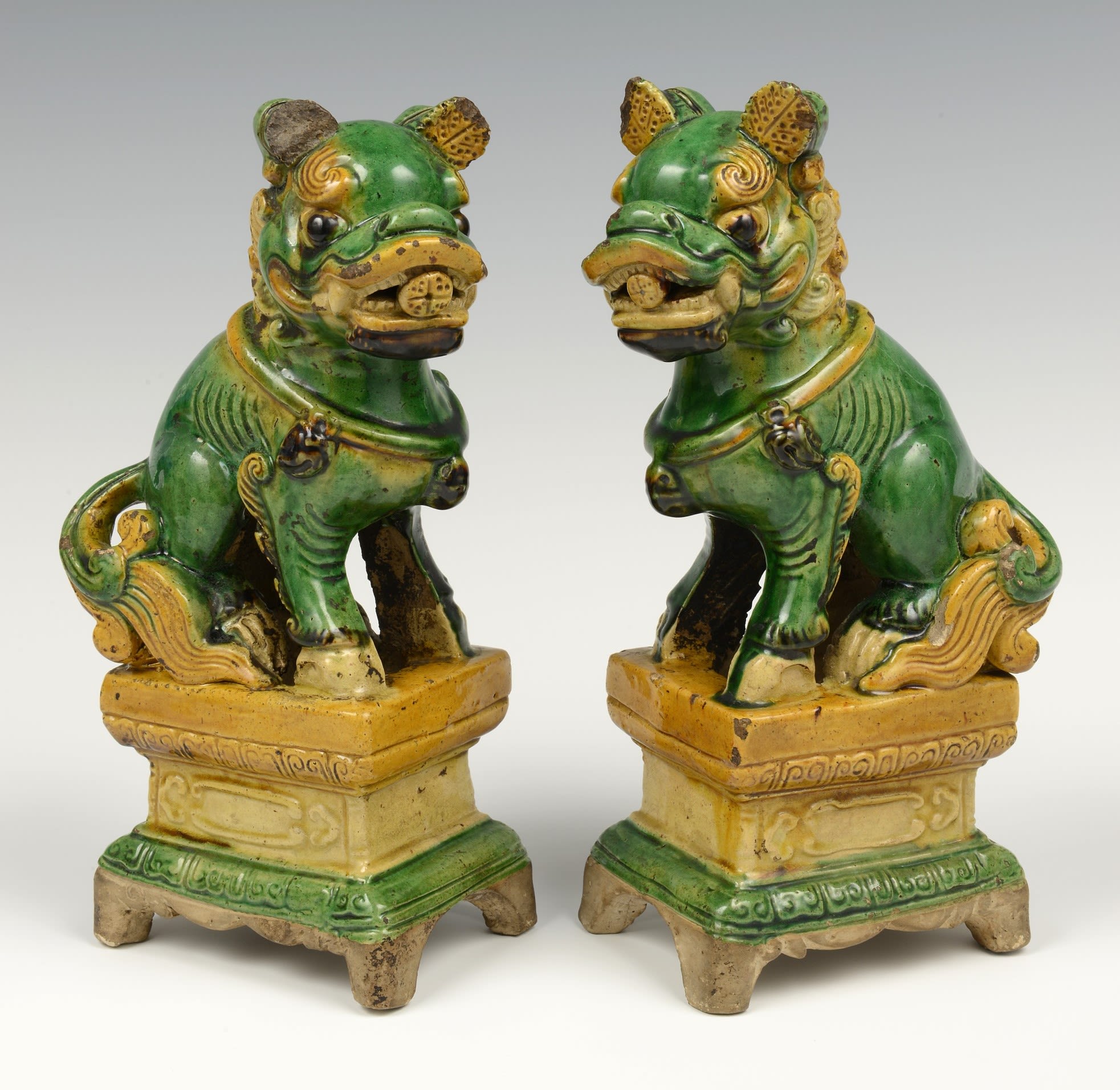
Candleholder figures | Stoneware with green and yellow glaze | China, 1550-1650 CE, Ming dynasty | Malcolm MacDonald Collection, DUROM.1969.246.A, DUROM.1969.246.B
Candleholder figures | Stoneware with green and yellow glaze | China, 1550-1650 CE, Ming dynasty | Malcolm MacDonald Collection, DUROM.1969.246.A, DUROM.1969.246.B
Malcolm paid £5 for these pieces from the Yamanaka Brothers’ shop in Kyoto. They would originally have held incense candles for Buddhist ceremonies. With their gaudy colours and very decorative design, this sort of figure was very popular with European collectors.
Malcolm served as a cabinet minister in Britain throughout the 1930s. During this time he collected paintings, furniture and more porcelain figures.
Malcolm’s new career as a diplomat started with his appointment as High Commissioner to Canada in 1941.
He visited the Canadian Arctic only three times during his period as High Commissioner and enjoyed talking with Inuit families in their igloos. Later in life he regretted not discovering the beauty of native North American art until many of its traditions were being lost. This pair of leather moccasins are an example of ‘reservation art’ produced for sale to tourists.
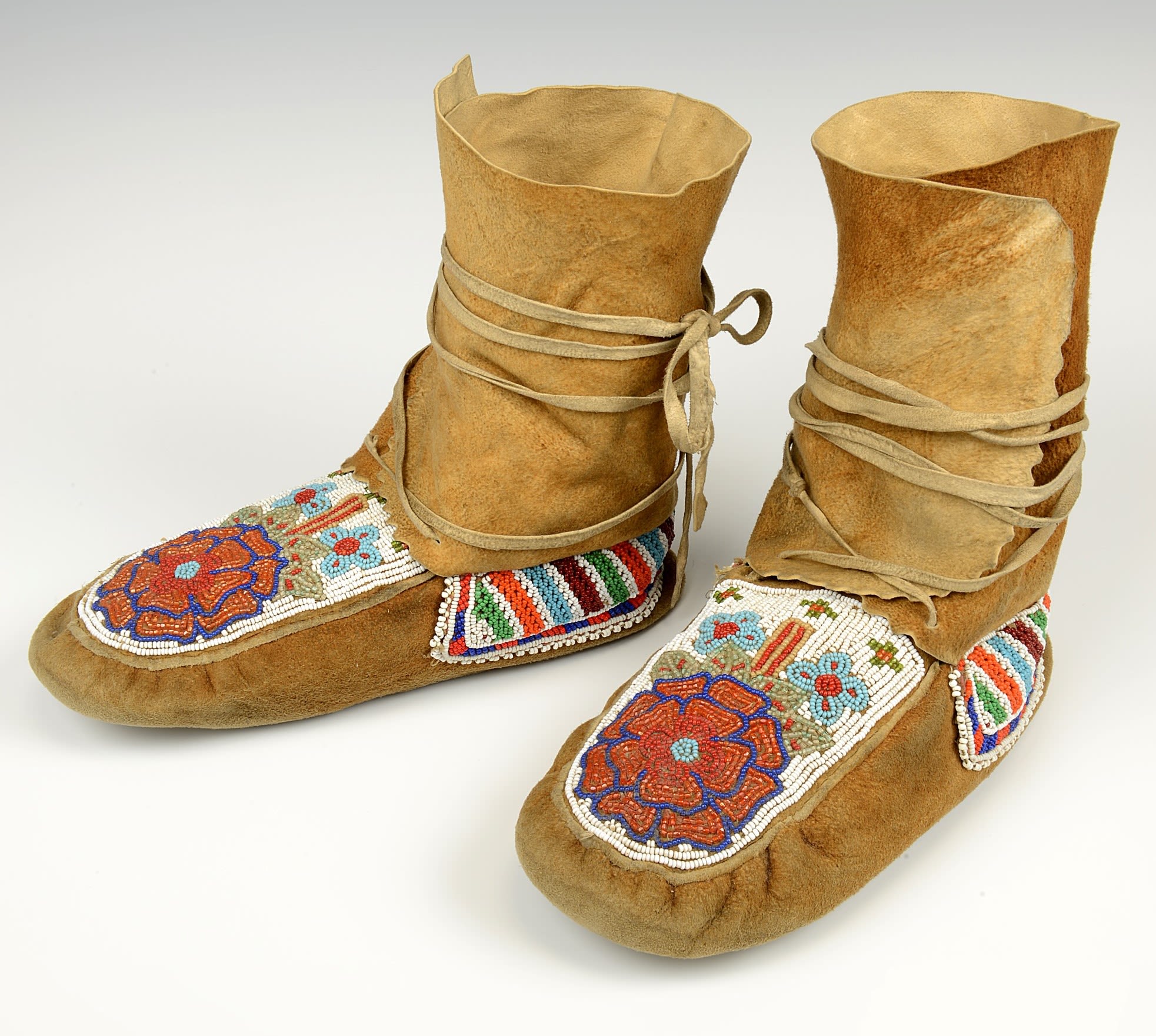
Inuit shoes (moccasins) | Leather and textile | Canada, 1900-1950 CE | Malcolm MacDonald Collection, DUROM.1980.64
Inuit shoes (moccasins) | Leather and textile | Canada, 1900-1950 CE | Malcolm MacDonald Collection, DUROM.1980.64
Malcolm met his wife Audrey while in Canada in 1946 and the couple continued to visit regularly. He probably bought these shoes on one of these later visits.
Malcolm bought most of his collection of Chinese ceramics whilst working as Commissioner-General in Singapore from 1948-1955. Rather than invest in stocks or shares, he spent most of his disposable income on works of art.
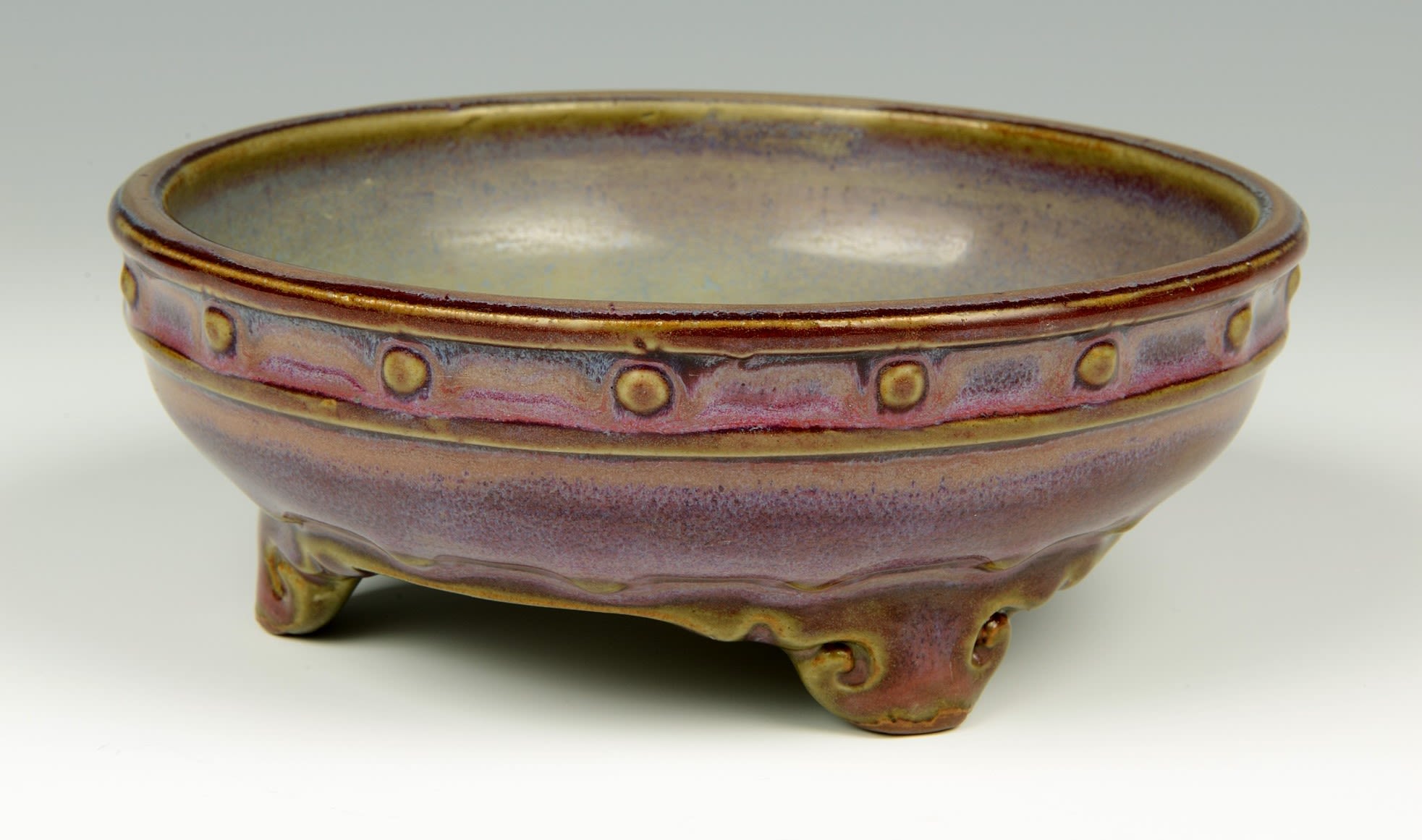
Junware bulb bowl | Earthenware | China, 14th-15th century CE, Northern Song dynasty | Malcolm MacDonald Collection, DUROM.1969.87
Junware bulb bowl | Earthenware | China, 14th-15th century CE, Northern Song dynasty | Malcolm MacDonald Collection, DUROM.1969.87
Imperial Chinese Junware from the Song dynasty was one of Malcolm’s favourite types, with this particular bulb bowl a fine example. It is in the shape of a drum and would have been a stand for a flower pot. It has a lavender blue glaze on the inside which passes into mauve on the outside.
In this period Malcolm also visited Hong Kong to build his collection.
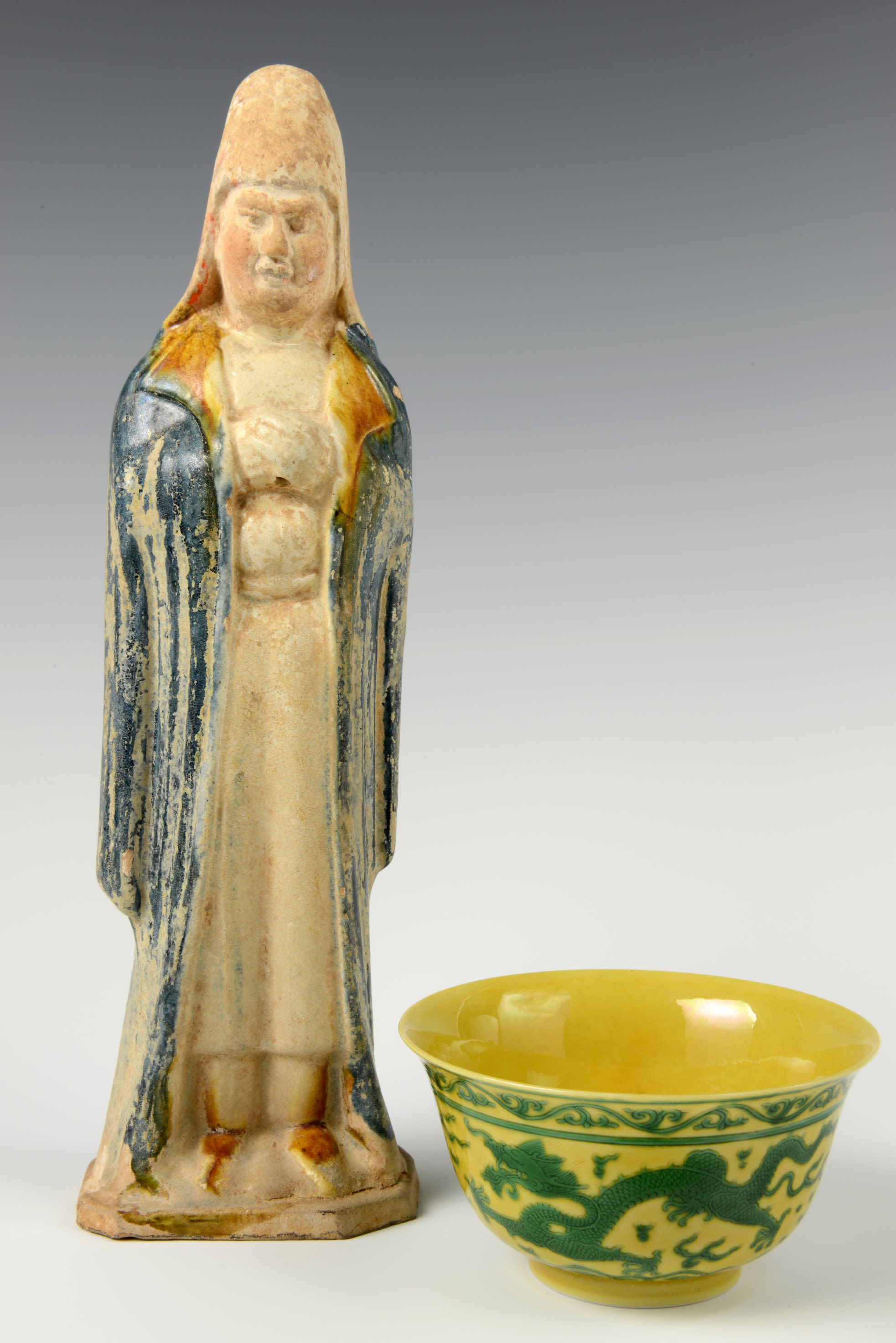
Figure of a Turfan man | Glazed buff earthenware | China 775-825 CE, Tang dynasty | Malcolm MacDonald Collection, DUROM.1969.31 and Qianlong bowl | Porcelain | China, 1736-1795 CE, Qing dynasty | Malcolm MacDonald Collection, DUROM.1969.204.A
Figure of a Turfan man | Glazed buff earthenware | China 775-825 CE, Tang dynasty | Malcolm MacDonald Collection, DUROM.1969.31 and Qianlong bowl | Porcelain | China, 1736-1795 CE, Qing dynasty | Malcolm MacDonald Collection, DUROM.1969.204.A
This bowl depicting a pair of dragons chasing a flaming pearl through the clouds was made during the reign of the Qianlong Emperor from the 1730s to 1790s. The glaze with green decoration was used specifically for dining in the imperial palace. The figure is typical of the Tang dynasty and probably depicts a Turfan man from west China.
Malcolm enjoyed escaping his official duties in Singapore to travel by flying boat to the longhouses of his Iban friends in Malaysian Borneo (Sarawak).
He was enraptured by their traditions and way of life. Whilst some diplomats and colonial governors preferred to mix only within the European expatriate community, Malcolm was more comfortable relaxing in an Iban village than in Singapore’s racially segregated clubs.
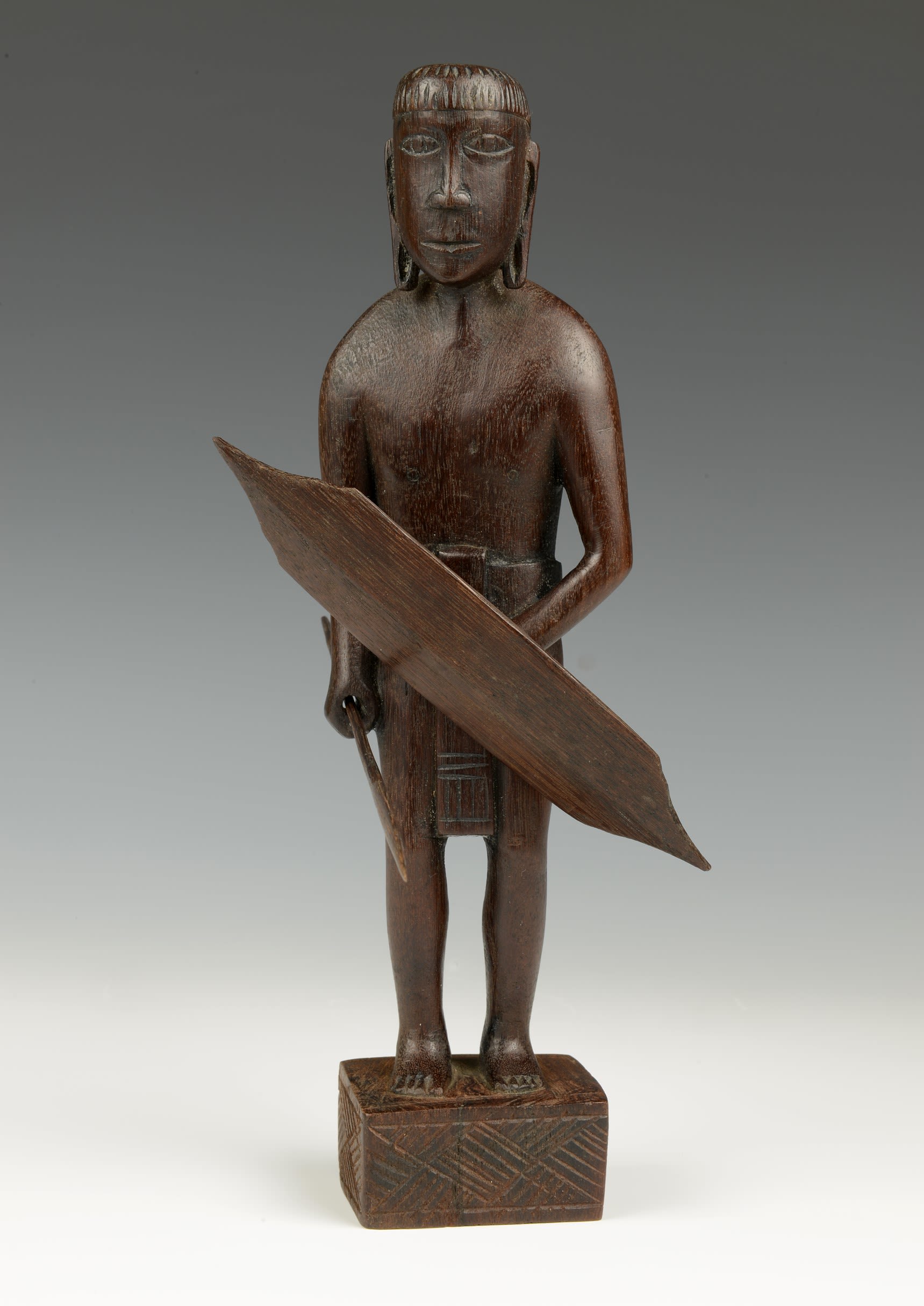
Carving of an Iban warrior | Wood | Sarawak, Around 1950-1970 CE | Malcolm MacDonald Collection, DUROM.1976.124
Carving of an Iban warrior | Wood | Sarawak, Around 1950-1970 CE | Malcolm MacDonald Collection, DUROM.1976.124
This carving depicting an Iban warrior shows the skill of their craftsmanship which Malcolm so admired.
When posted to India in 1955, Malcolm did not fall in love with its culture straight away and was baffled by its styles of art and architecture. Malcolm believed that collecting first required knowledge, and thus by learning about Hindu religion and Indian culture he was able to appreciate their art.
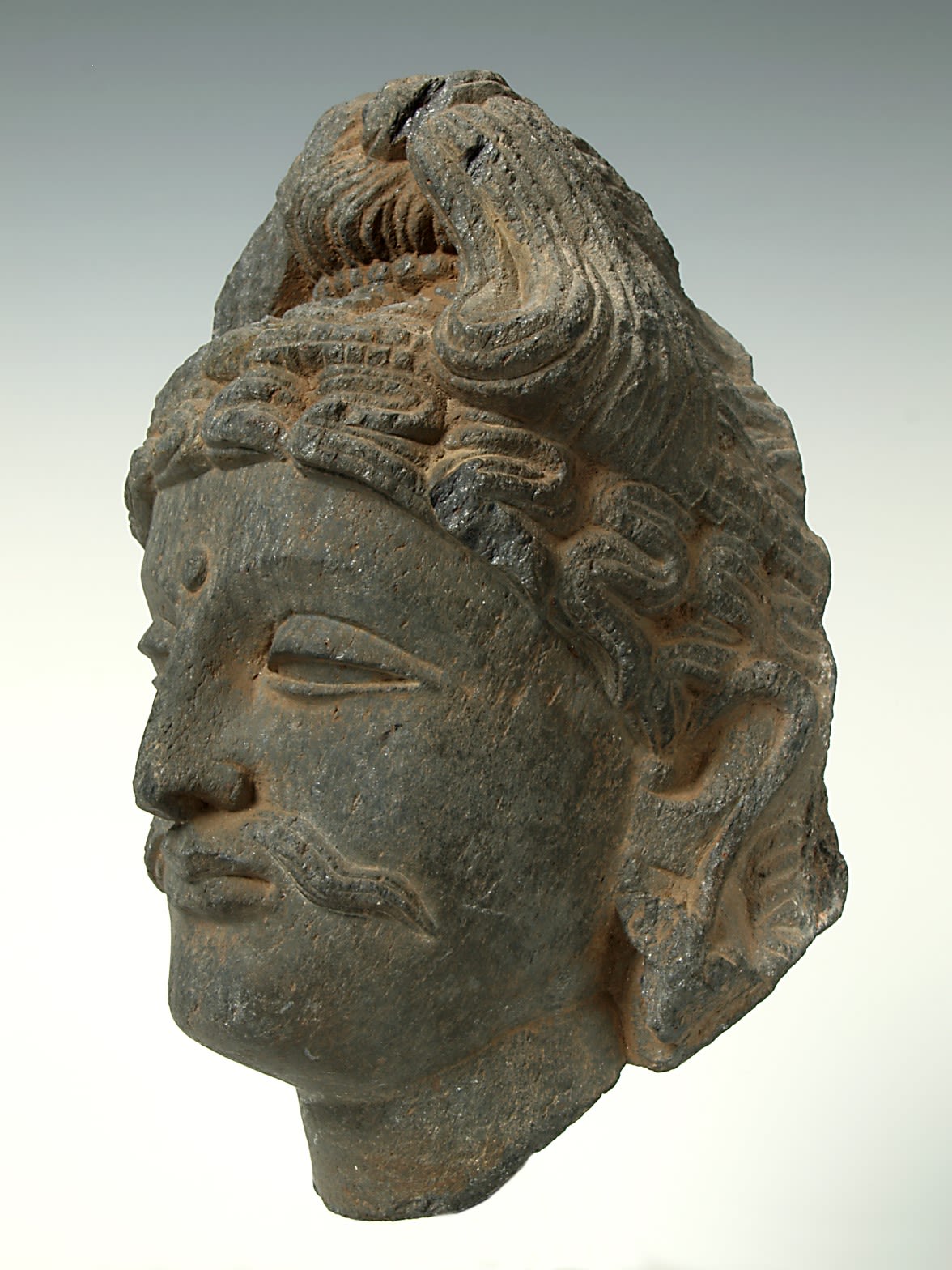
Bodhisattva head | Schist, Kingdom of Gandhara | 100-399 CE | Malcolm MacDonald Collection, DUROM.1969.346
Bodhisattva head | Schist, Kingdom of Gandhara | 100-399 CE | Malcolm MacDonald Collection, DUROM.1969.346
In Buddhist belief, a Bodhisattva is someone who has begun the journey towards becoming a Buddha. This particular head of a Bodhisattva comes from the ancient kingdom of Gandhara in modern day Pakistan and Afghanistan. As Malcolm slowly came to appreciate the art and architecture of India he collected both bronze and stone sculptures. Because stone sculptures were less popular at the time, he was able to buy some magnificent pieces like this Bodhisattva for very reasonable prices.
This teapot is one of the youngest items in Malcolm’s collection of Chinese ceramics. It is in five colour style, often called Famille Noir. The pattern depicts three plants: the pine tree, bamboo and lotus blossom. In Chinese folklore these are known as the Three Friends of Winter because they do not wither like other plants. They symbolise resilience.
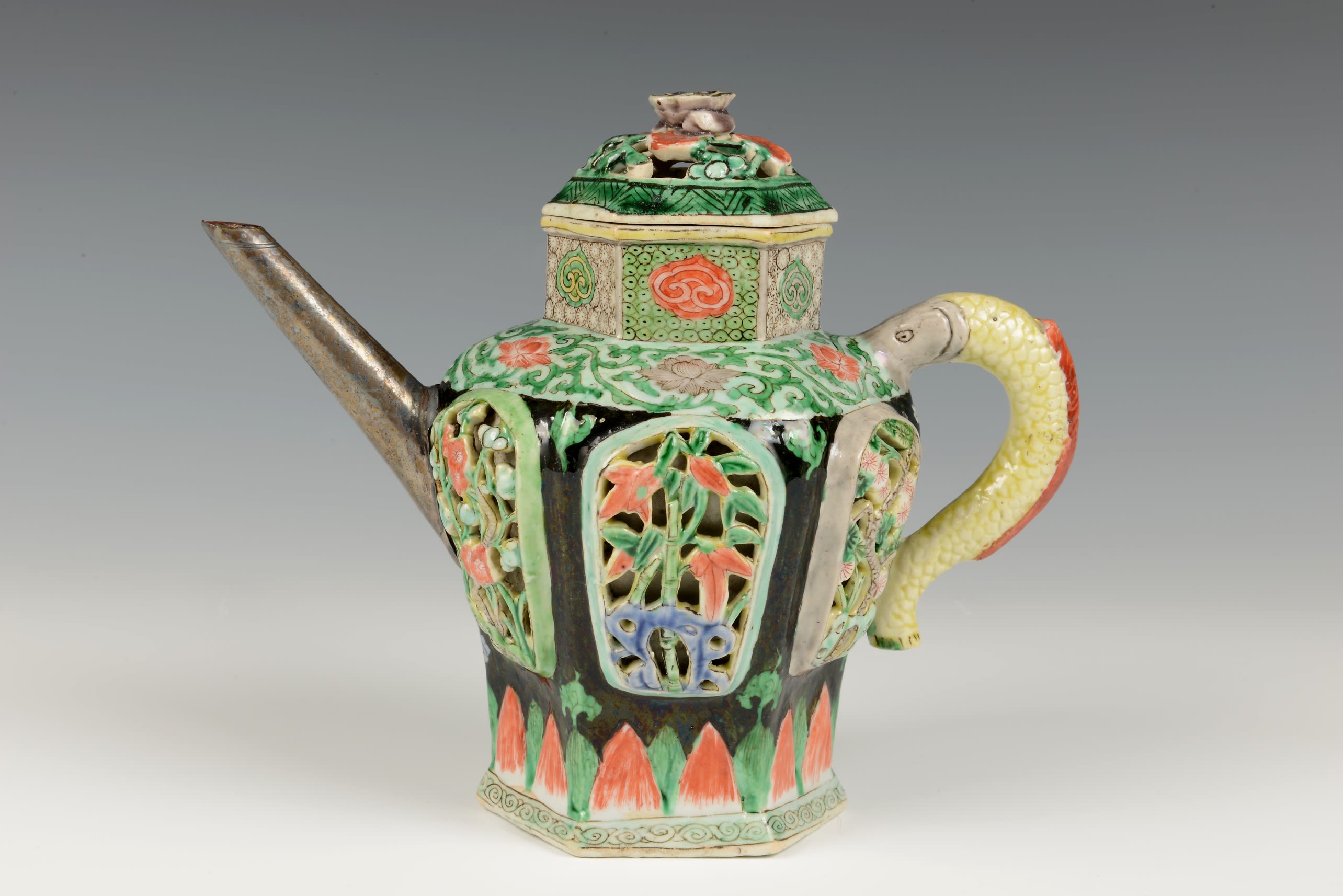
Teapot | Porcelain, metal | China, 1912-1949 CE | Malcolm MacDonald Collection, DUROM.1969.304
Teapot | Porcelain, metal | China, 1912-1949 CE | Malcolm MacDonald Collection, DUROM.1969.304
Malcolm did not particularly like Famille Noir ceramics and purchased this example from Bluett and Sons of London after retiring from diplomacy solely to fill a gap in his collection. At this time, Malcolm was determined to assemble a collection representing all the major artistic developments from each Chinese period since prehistoric times.
Malcolm was more than just a private collector. He believed that art and craftsmanship were important to national identity.
It was his goal to leave behind a legacy which would inspire future generations.
In 1955, Malcolm decided to donate his collection of Chinese export ware ceramics to establish an art museum in Singapore and used his influence to persuade fellow collectors and government officials to also donate gifts to the new museum.
Malcolm’s gallery became the kernel of today’s National University of Singapore Museum.
Upon his retirement, Malcolm had hoped to donate his collection of imperial Chinese ceramics to the Oriental Museum where it was already on loan for assisting in Durham University teaching. But having spent all his money on beautiful things, Malcolm needed funds to buy a house.
He sold his ceramic collection to the Museum but only for a third of its market value and helped them raise the money from generous benefactors.
One of the things one collects is people. I have made a fine collection.
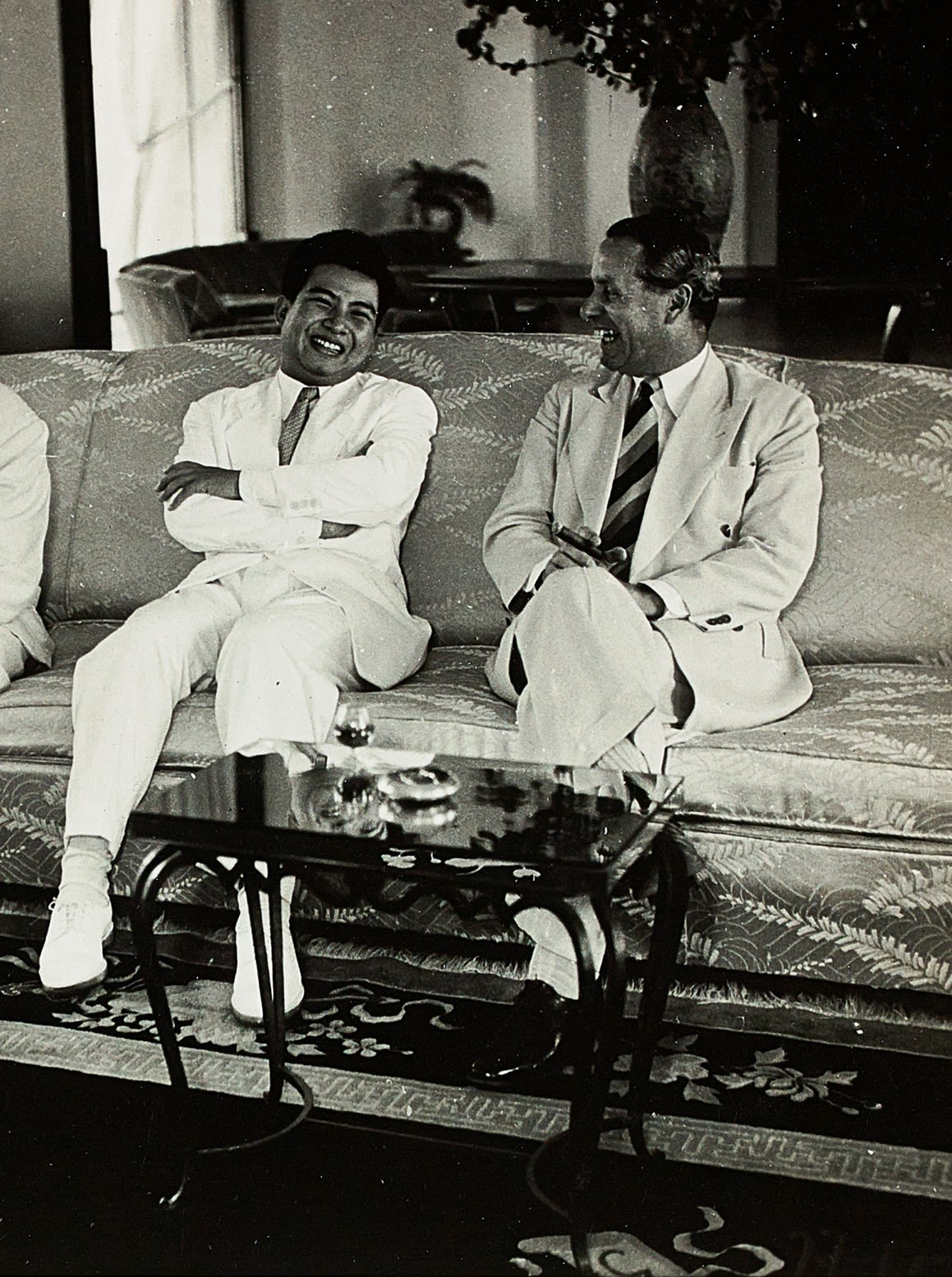
Malcolm MacDonald’s success as a diplomat was a product of his energy and innovation, sympathy for newly independent nations and ability to strike up strong friendships.
In Singapore, Malcolm was a high status figure who associated with leading statesmen. His unassuming demeanour was deceptive, as he was an astute and effective diplomat. He formed close friendships with Prince Souvanna Phouma of Laos and King Norodom Sihanouk of Cambodia. These were emerging battlegrounds in the Cold War.
Malcolm personally championed the opposition to communism in South East Asia but also hoped that new Asian nations could choose a neutral path rather than be forced into the global conflict. His passion for Chinese ceramics overcame national differences and Malcolm also became friends with communist leaders from the People’s Republic of China.
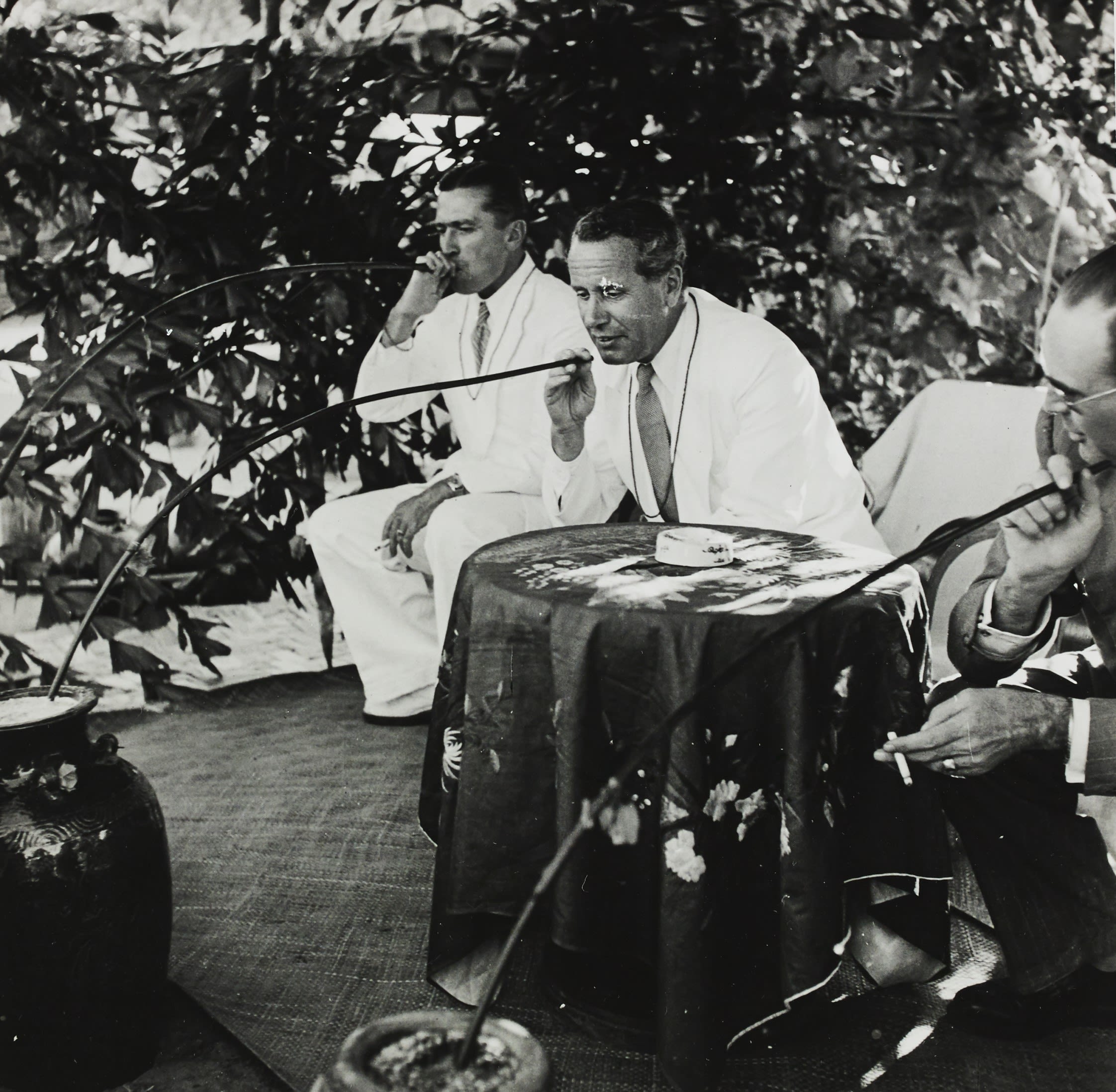
Durham University Library
Durham University Library
Malcolm brought a new, informal style to diplomacy. This earned him the moniker ‘the shirt-sleeve diplomat’. He abhorred racial segregation and did not only associate with the powerful. His unique personal qualities and wealth of insight into the cultures of East and South East Asia earned Malcolm the enduring respect of the British governments which he served.
Malcolm and the King
Music, Dancing and Water-Skiing with Sihanouk
Malcolm MacDonald became friends with many world leaders. His closest friendship was probably with King Norodom Sihanouk of Cambodia. These objects are personal gifts given to Malcolm by Sihanouk.
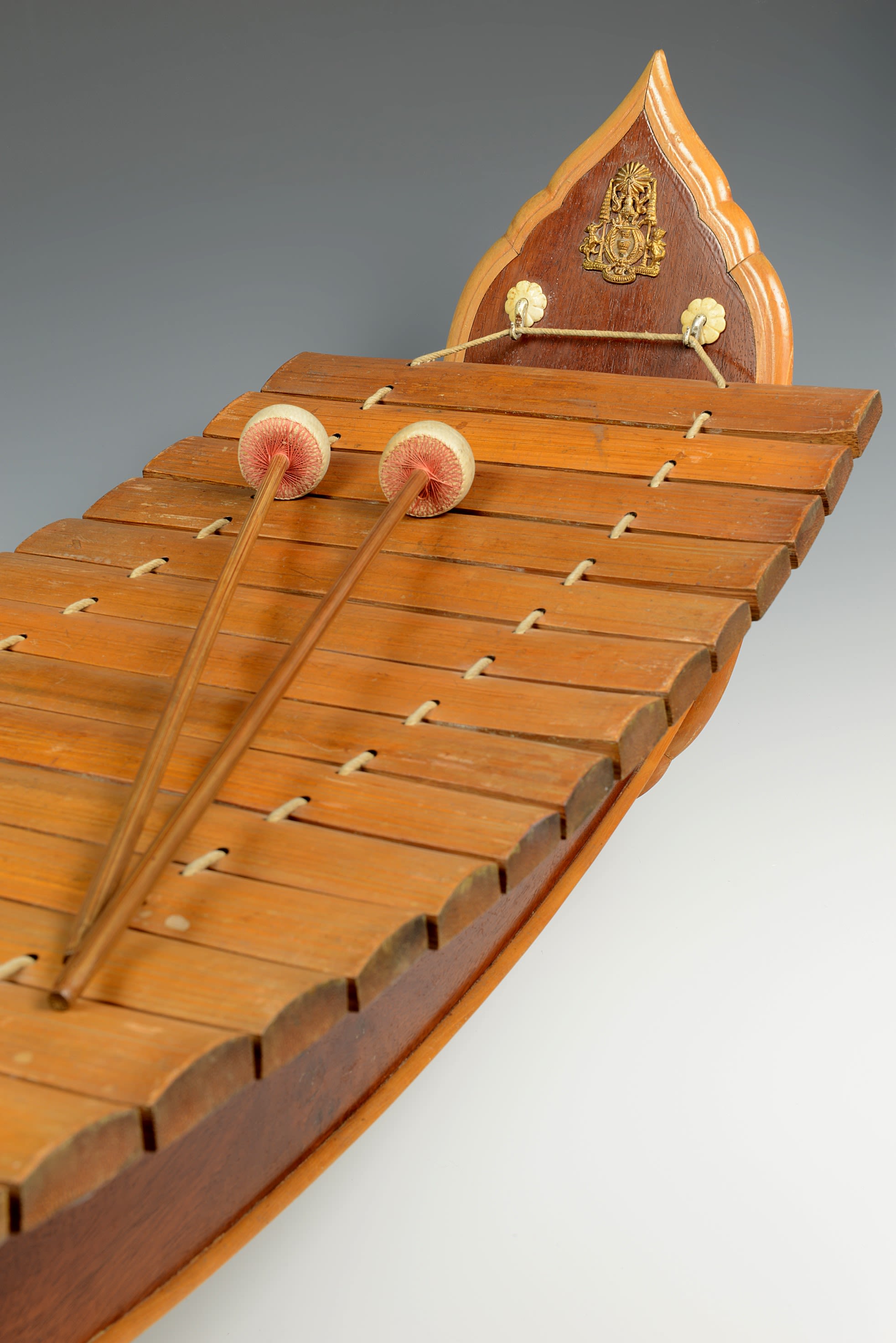
Xylophone (roneat ek) | Wood, textile | Cambodia, Early 20th century CE | Malcolm MacDonald Collection, DUROM.1976.116
Sihanouk was a remarkable man. He became King at the age of eighteen but in 1955 abdicated, becoming Prince Sihanouk in order to serve his country as Prime Minister. Sihanouk was a socialist who was passionate about improving the lives of his people. Malcolm also was a former Labour Party MP and the son of Britain’s first Labour Prime Minister.
They therefore shared common political goals, and became important allies during momentous events such as the Geneva Conference of 1961-1962 which ended the civil war in Laos. This was in large part due to Malcolm and Sihanouk’s efforts.
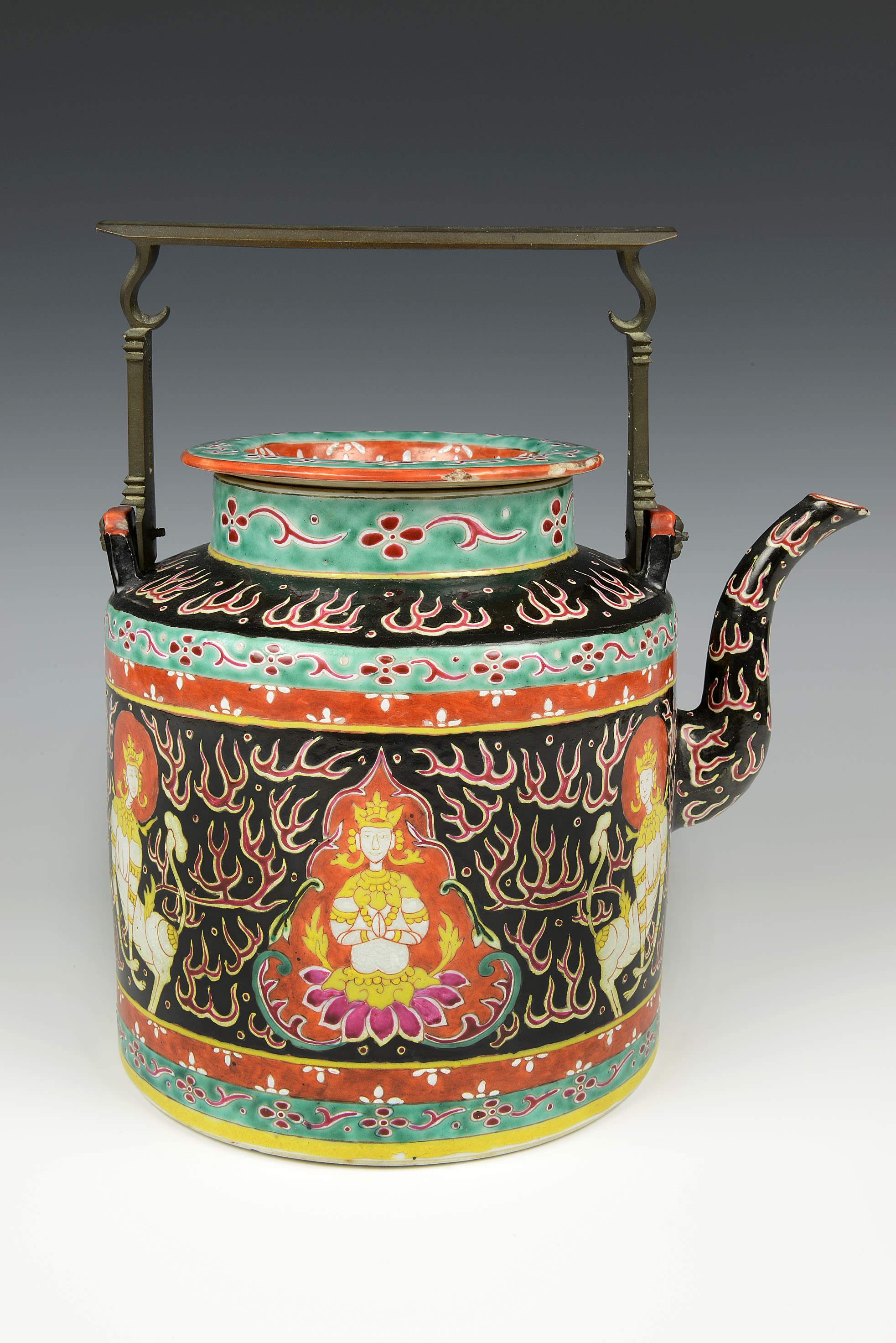
Teapot | Porcelain | Thailand, 1850-1900 CE | Malcolm MacDonald Collection, DUROM.1979.32
On official occasions the two men would sit together and watch 27 the Cambodian Royal Corps de Ballet perform to the sounds of the traditional orchestra. On more personal visits, they would dance to the tunes of Sihanouk’s private ragtime band or watch films produced by the King himself. Sihanouk also taught Malcolm to water-ski and many times took him on tours of Cambodia’s ancient ruins.
Malcolm tried to entertain King Sihanouk’s younger daughter by performing his party trick of walking on his hands. The young girl replied: ‘I’ve got a monkey that can do that’.

Xylophone (roneat ek) | Wood, textile | Cambodia, Early 20th century CE | Malcolm MacDonald Collection, DUROM.1976.116
Xylophone (roneat ek) | Wood, textile | Cambodia, Early 20th century CE | Malcolm MacDonald Collection, DUROM.1976.116

Teapot | Porcelain | Thailand, 1850-1900 CE | Malcolm MacDonald Collection, DUROM.1979.32
Teapot | Porcelain | Thailand, 1850-1900 CE | Malcolm MacDonald Collection, DUROM.1979.32
I expected to like the wild men of Borneo a great deal. No doubt because I am a bit of a wild man myself.
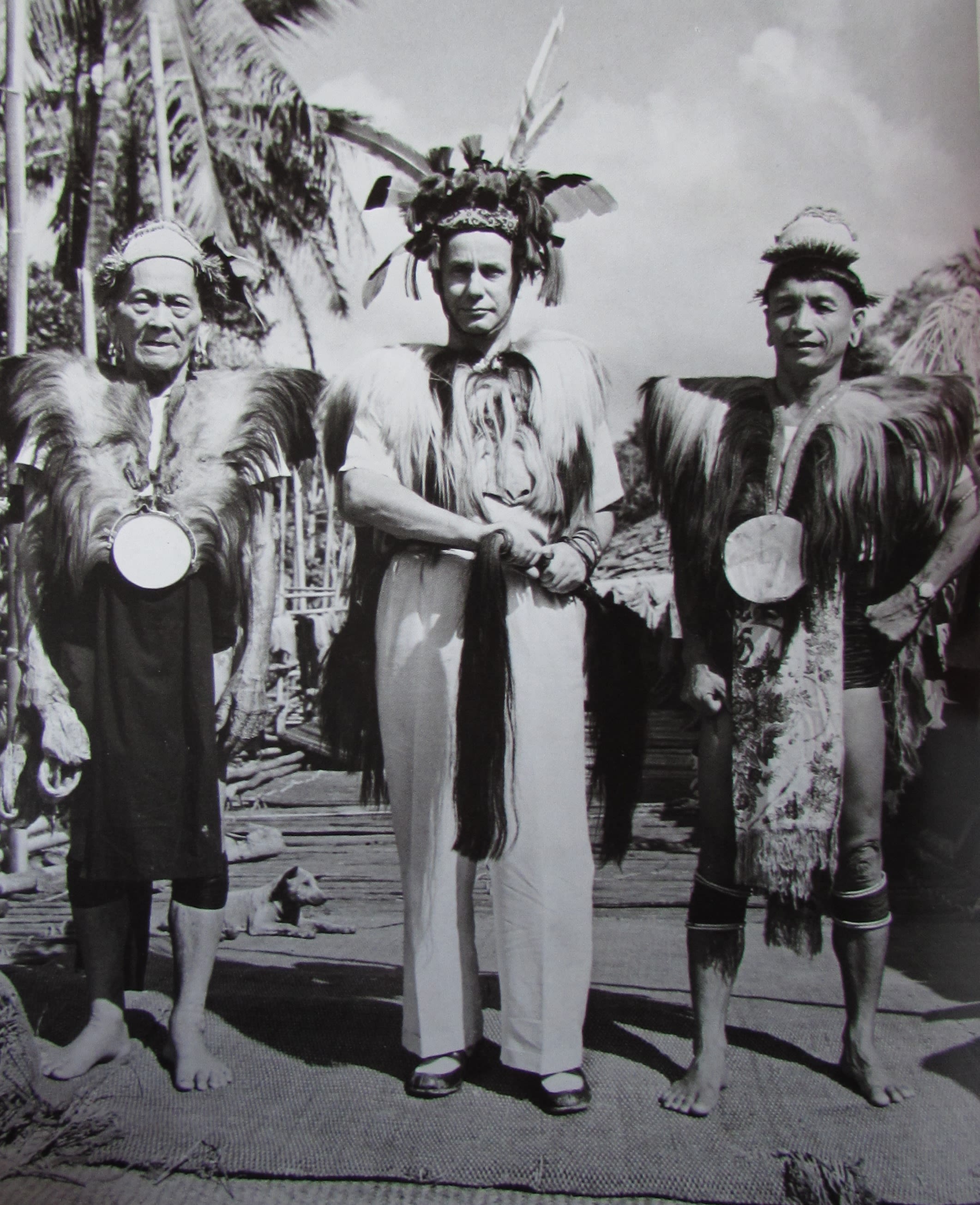
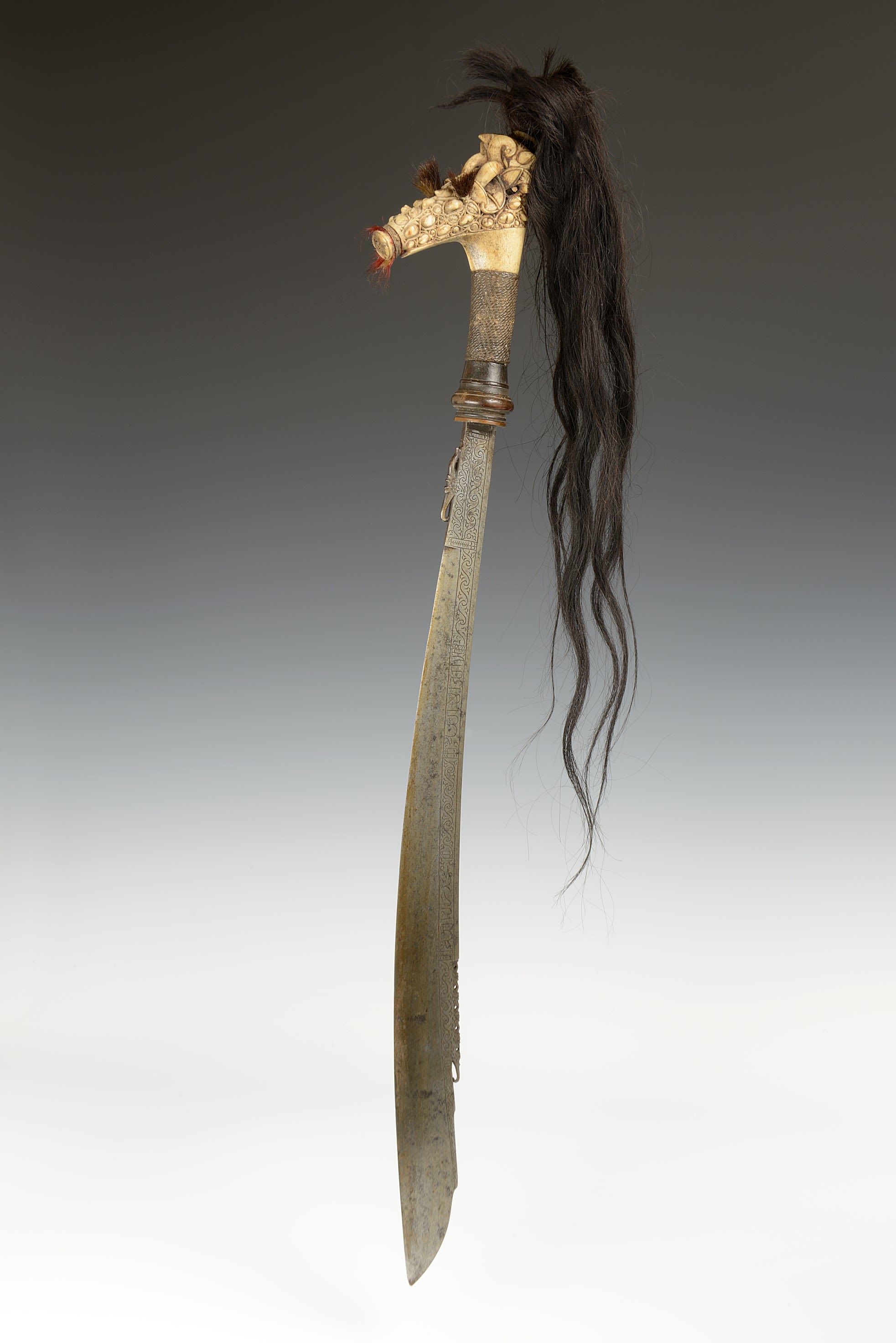
Head-hunting sword (parang) | Steel, brass, horn, rattan and human hair | Sarawak, Early 20th century CE | Malcolm MacDonald Collection, DUROM.1976.119
Head-hunting sword (parang) | Steel, brass, horn, rattan and human hair | Sarawak, Early 20th century CE | Malcolm MacDonald Collection, DUROM.1976.119
Collecting Heads
The Adopted Son of Temenggong Koh
The Iban people of the island of Borneo had a reputation for being fearsome head-hunters. This sword belonged to Temenggong Koh (1870-1956), Paramount Chief of the Ibans and the most successful head-hunter of his day.

Head-hunting sword (parang) | Steel, brass, horn, rattan and human hair | Sarawak, Early 20th century CE | Malcolm MacDonald Collection, DUROM.1976.119
Iban head-hunters would tattoo one joint of their fingers or thumbs for each head taken. Once their digits were full, they would continue along the back of their hands. By the time Malcolm MacDonald met Temenggong Koh, Koh’s hands were completely covered in tattoos. He is said to have taken over 100 heads with this sword.
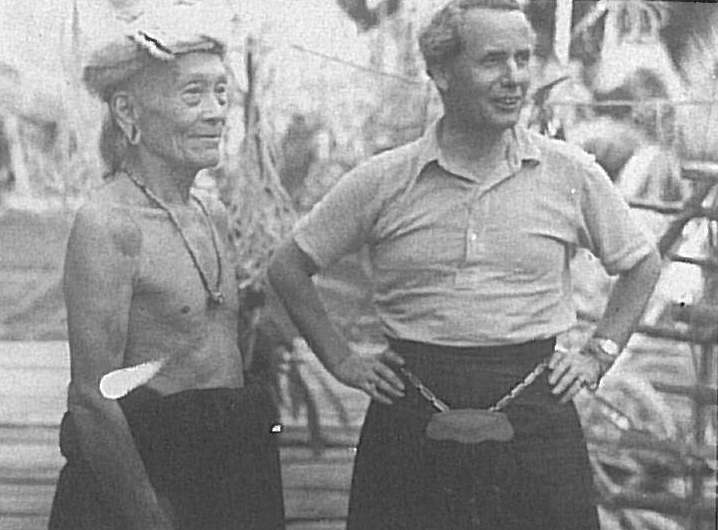
Durham University Library
Durham University Library
Despite this ferocious reputation, Malcolm and Koh quickly became good friends and discovered a shared passion for collecting Chinese ceramics. This relationship soon went beyond ordinary friendship, as Koh adopted Malcolm as his son (anak).
Malcolm wrote that ‘one of my proud boasts is that I have had two fathers, one of whom was a Prime Minister of Britain and the other a Paramount Chief in Borneo’.
I like beauty, I love beauty, I worship beauty in all its earthly forms.
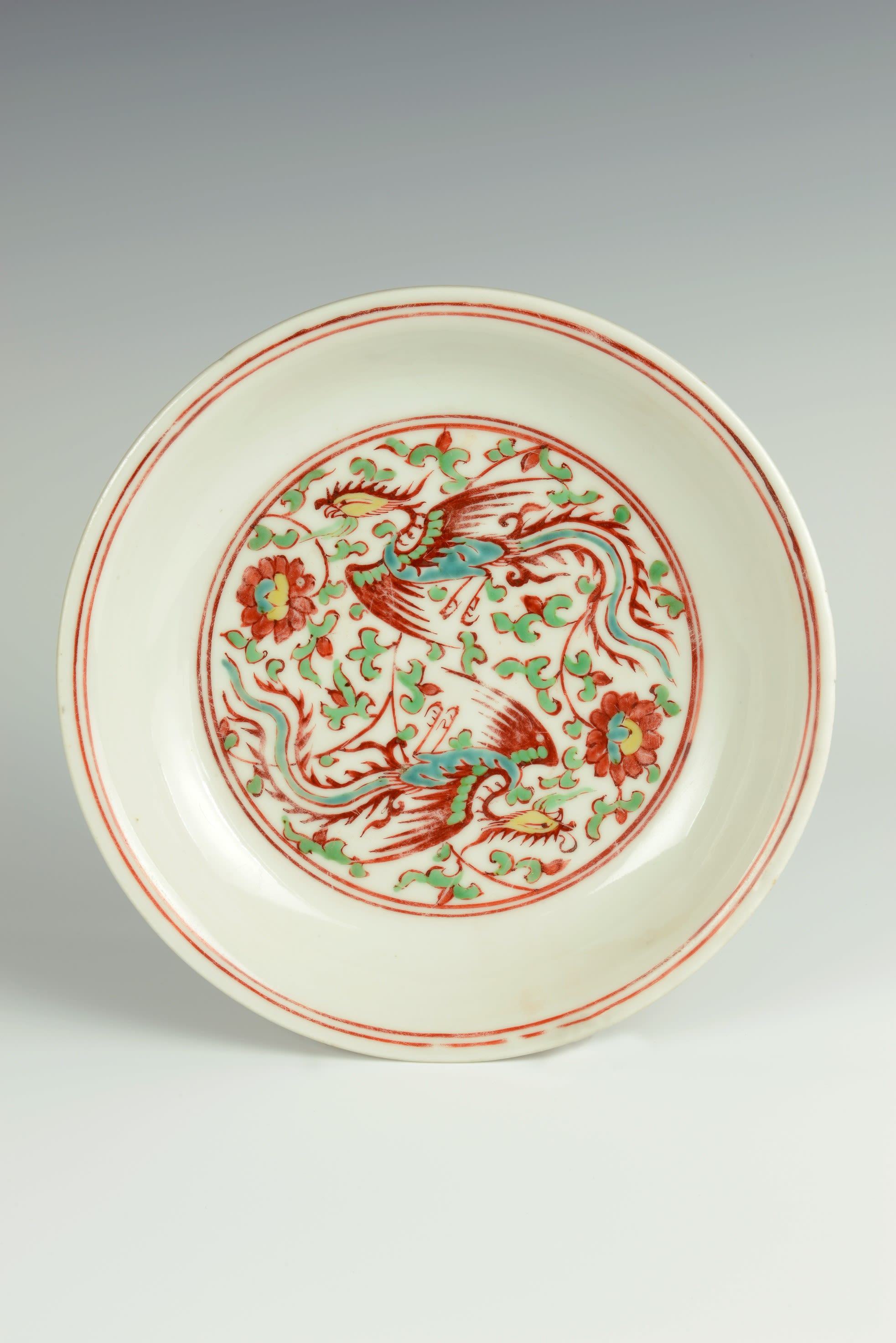
For Malcolm MacDonald, collecting was not just about acquiring objects. In his diplomatic career across Canada, Asia and Africa, Malcolm loved to explore indigenous cultures and saw beauty in their traditional ways of life.
Representing Britain across the world gave Malcolm the opportunity to buy objects from a range of cultures. These included Indian stone sculptures, Japanese ivory, Cambodian bronze deities, African wood-work and Iranian ceramics.
Malcolm supported contemporary craftsmanship as well as acquiring a collection of Chinese ceramics spanning four thousand years of history. He believed in the social impact of art, donating collections to university museums in Singapore and Malaysia.
In Kenya, he saw art as a means of building a new, independent national identity and supported the teaching of craftsmanship to convicted prisoners and his collections contain several everyday objects and articles of clothing from Borneo and further afield, demonstrating Malcolm’s fascination with the people he encountered across the world.
Malcolm was also a collector with a strong social conscience. In the wake of the Second World War, even reputable dealers might sometimes inadvertently sell antiques which had been looted from their original owners. Malcolm made it known to all his guests that if they ever spotted one of their lost possessions amongst his collection, he would willingly return it to them. He did so on several occasions.
For Malcolm, art and beauty were as much about transforming modern society as recording relics of the past.
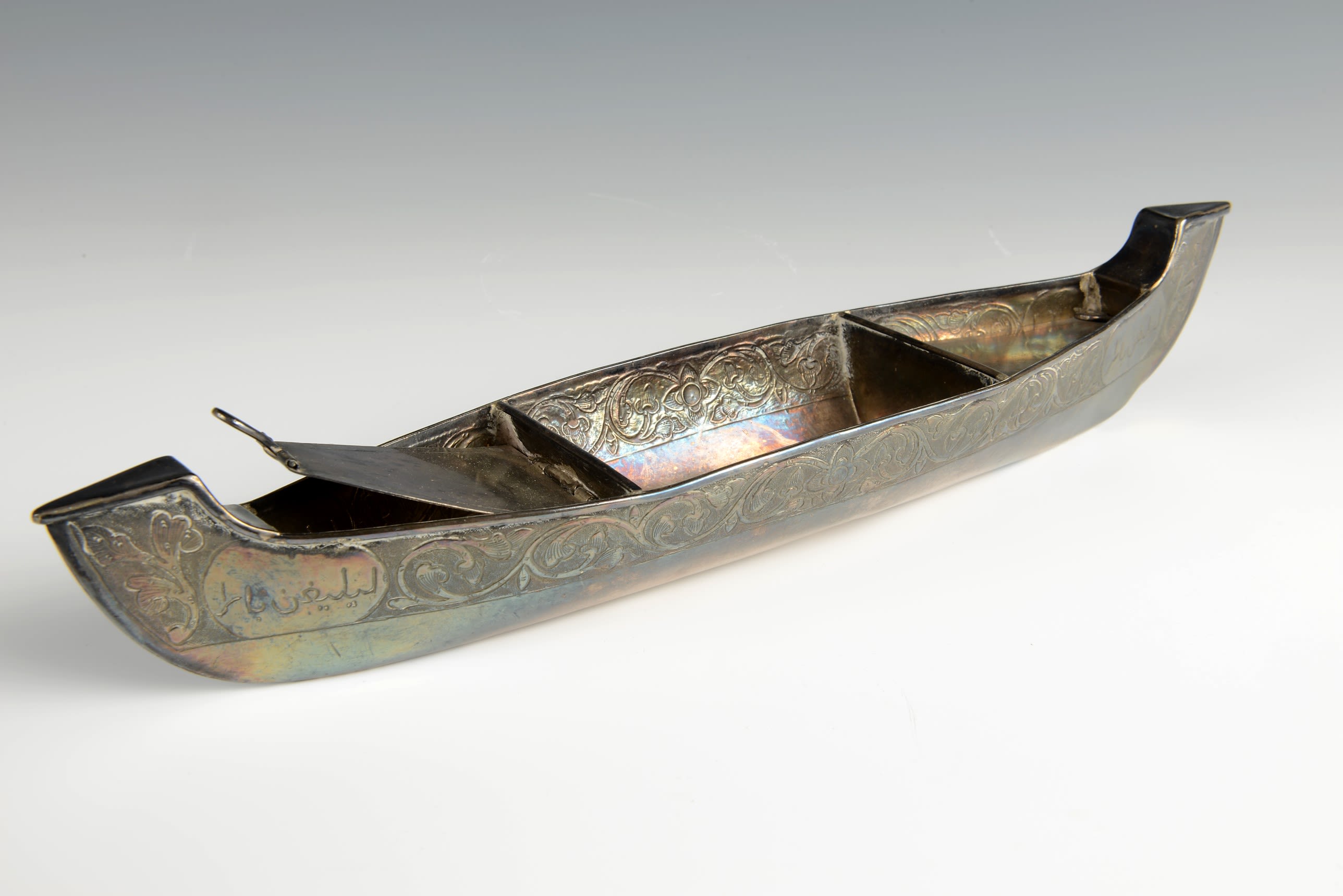
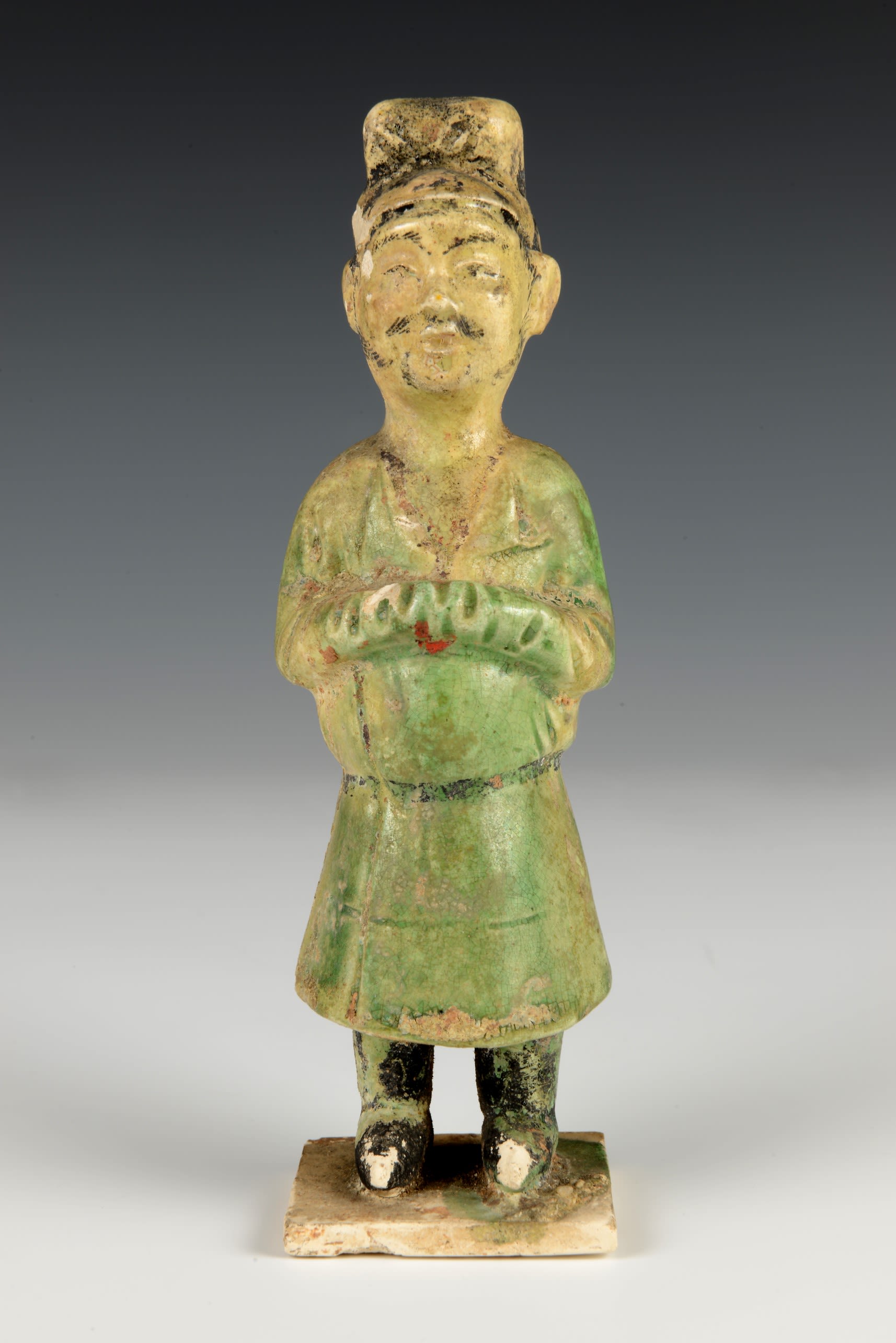
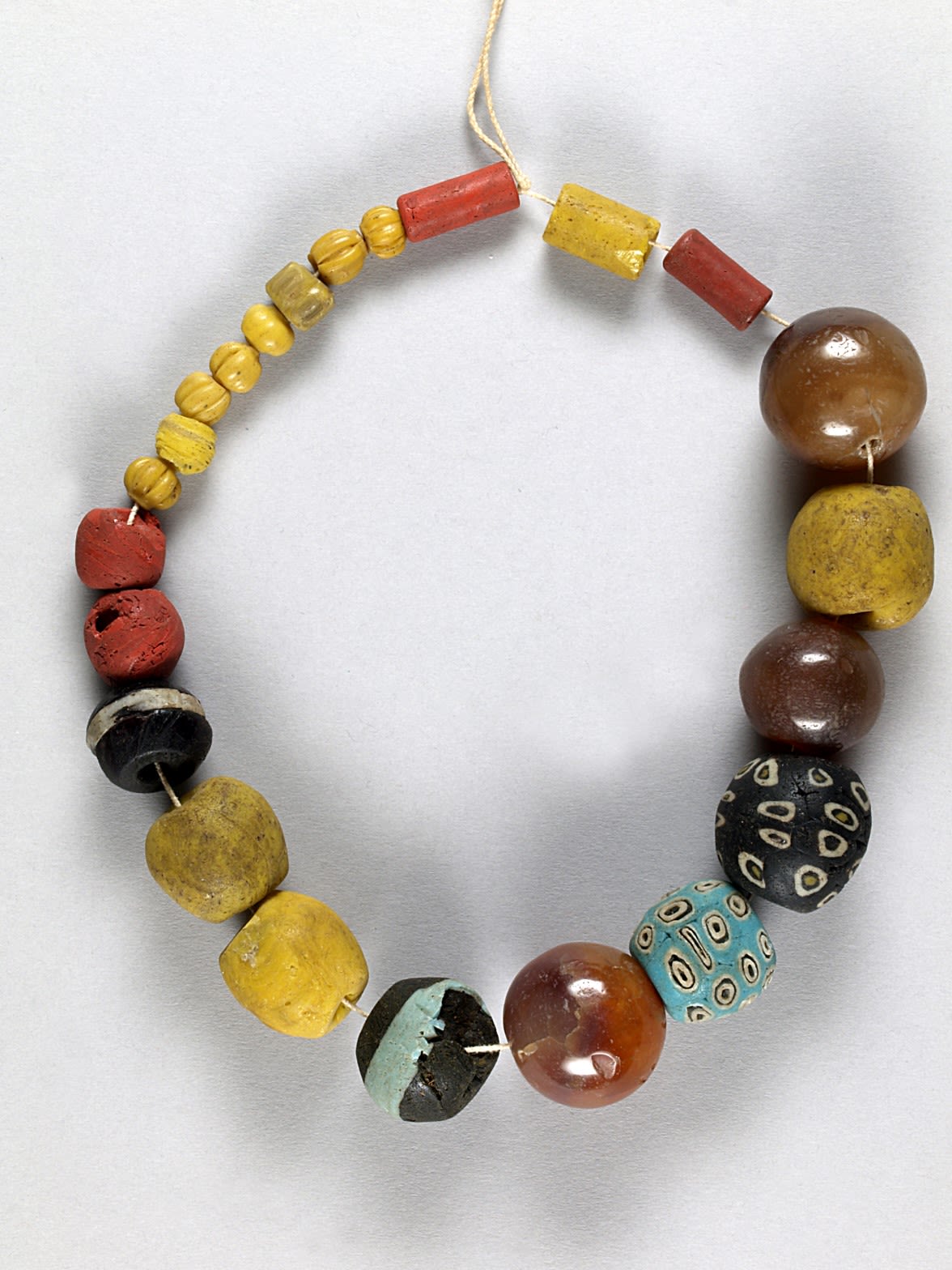
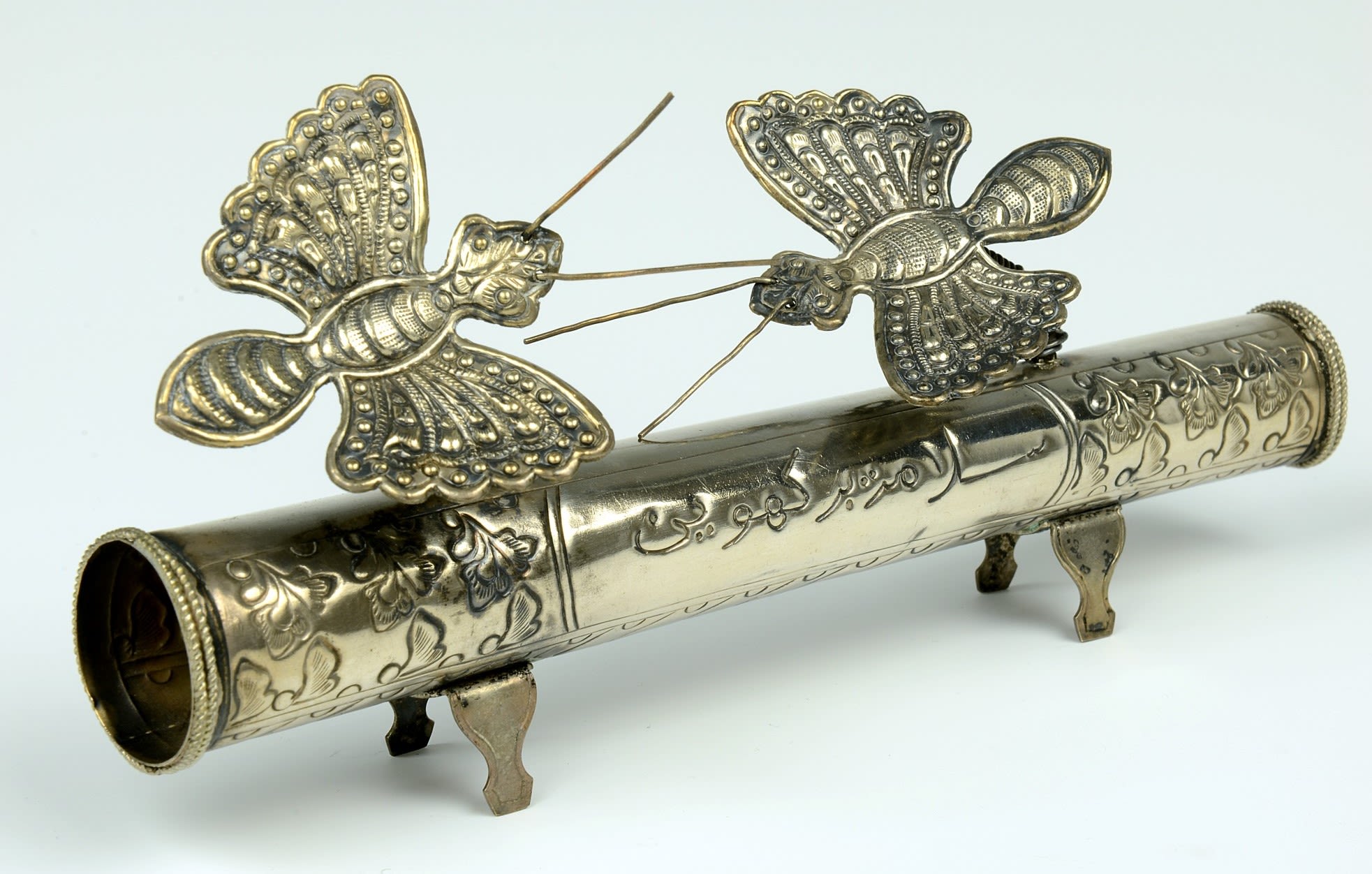
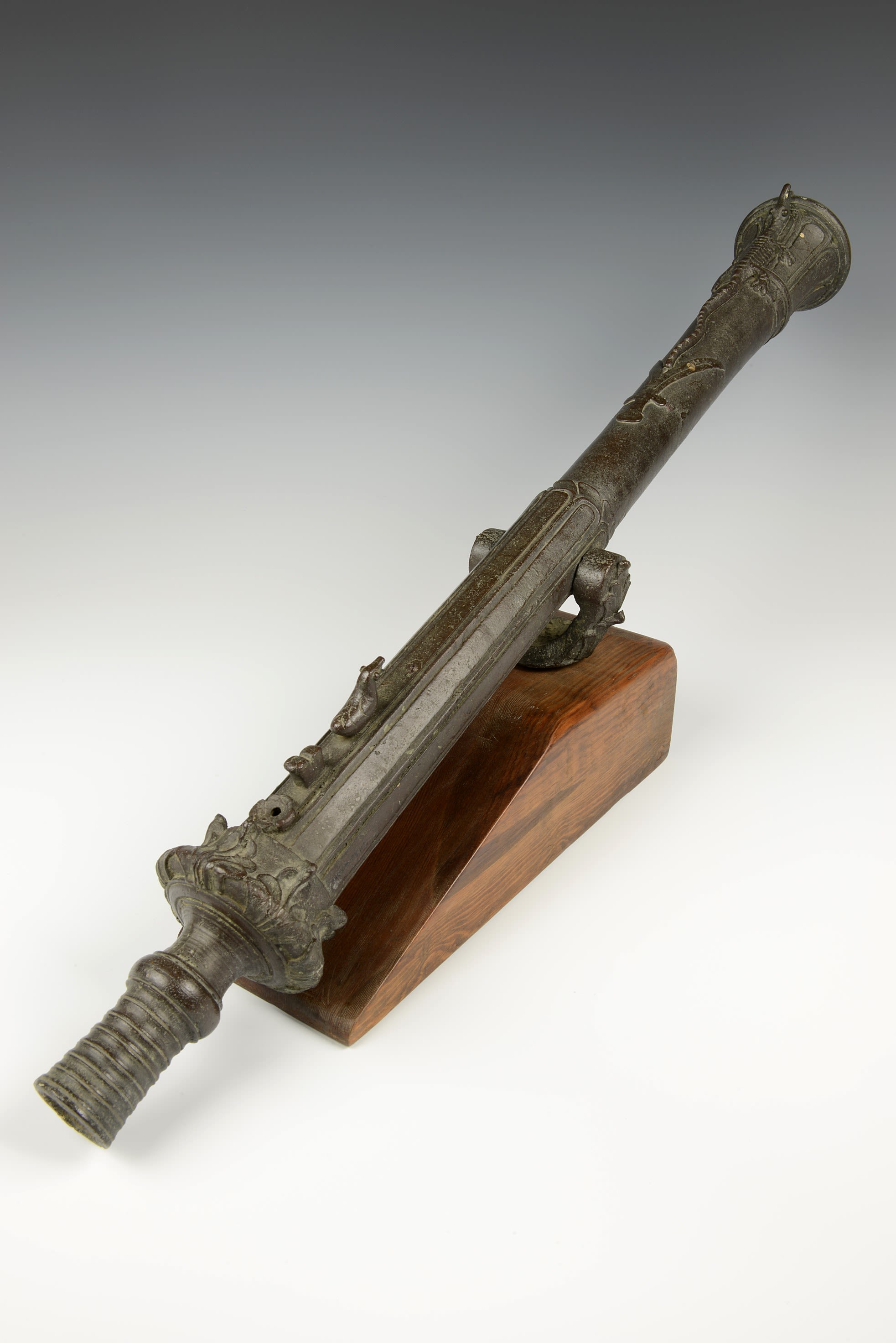
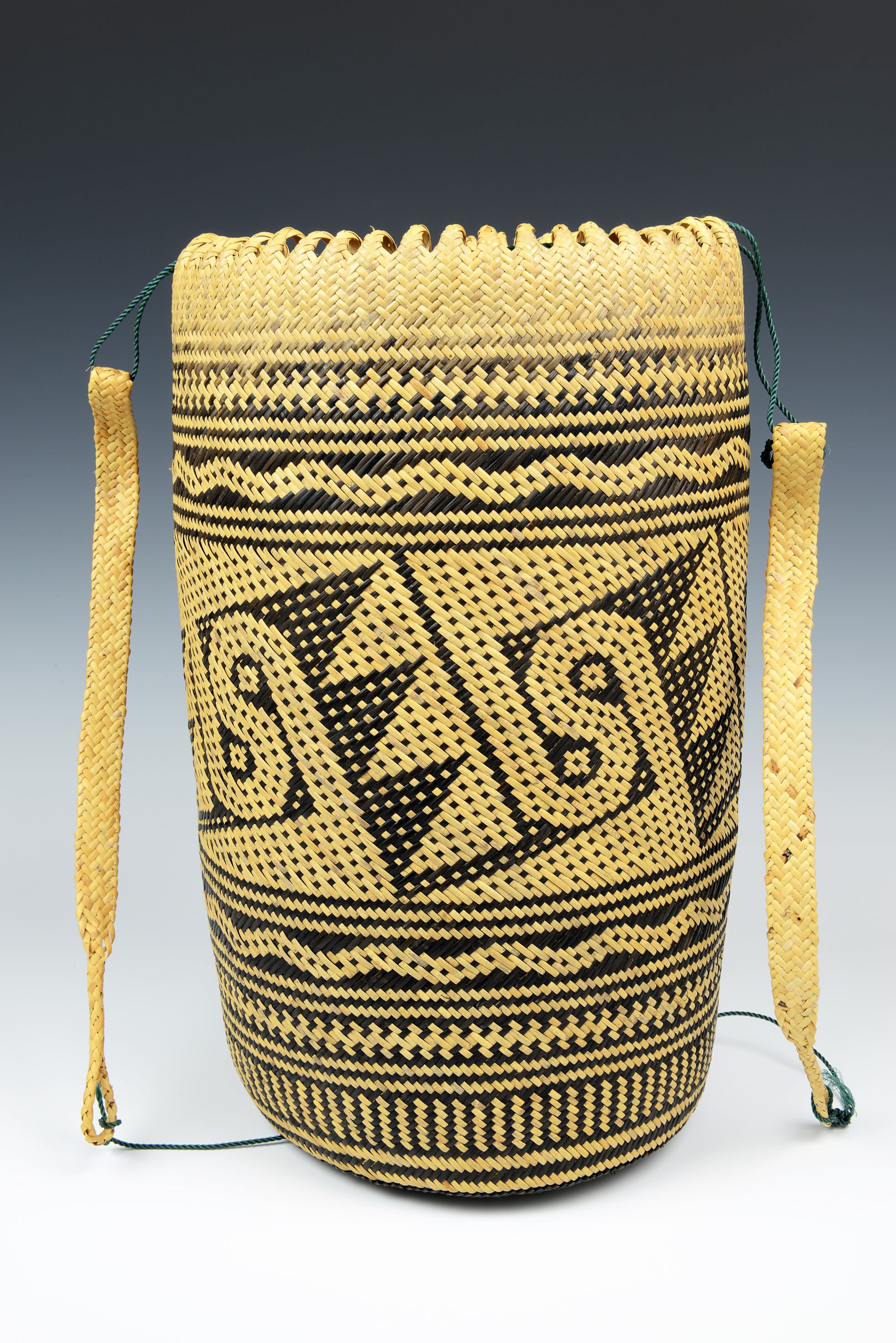

Dish in the shape of a canoe (prahus) | Silver | Brunei, 1945-1975 CE | Malcolm MacDonald Collection, DUROM.1979.142 | This object represent the exquisite craftsmanship of the silversmiths of the Sultanate of Brunei. Malcolm was particularly friendly with an 80 year old craftsman named Haji Mohammed, watching them at work whilst dangling his legs above the crocodile infested waters beneath the silversmiths’ stilt house.
Dish in the shape of a canoe (prahus) | Silver | Brunei, 1945-1975 CE | Malcolm MacDonald Collection, DUROM.1979.142 | This object represent the exquisite craftsmanship of the silversmiths of the Sultanate of Brunei. Malcolm was particularly friendly with an 80 year old craftsman named Haji Mohammed, watching them at work whilst dangling his legs above the crocodile infested waters beneath the silversmiths’ stilt house.

Figure of a camel boy | Earthenware | China, 775-825 CE, Tang dynasty | Malcolm MacDonald Collection, DUROM.1969.30 | From his first visit to East Asia in 1929, Malcolm was attracted to the beautiful figures created during the Tang dynasty. He visited a retirement home for eunuchs and watched a caravan of camels bringing goods for sale from across the Gobi Desert. Perhaps more than other types of Chinese ceramic, figures like the camel boy conjure up images of an almost forgotten way of life.
Figure of a camel boy | Earthenware | China, 775-825 CE, Tang dynasty | Malcolm MacDonald Collection, DUROM.1969.30 | From his first visit to East Asia in 1929, Malcolm was attracted to the beautiful figures created during the Tang dynasty. He visited a retirement home for eunuchs and watched a caravan of camels bringing goods for sale from across the Gobi Desert. Perhaps more than other types of Chinese ceramic, figures like the camel boy conjure up images of an almost forgotten way of life.

Bead necklace | Glass, textile | China and Sarawak | Date unknown | Malcolm MacDonald Collection, DUROM.1976.155 |One of Malcolm’s most remarkable friends in Malaysian Borneo (Sarawak) was named Lallang. She was one of the few women to become a chieftainess of the Kayan people. On their first meeting, Lallang showed Malcolm two bead necklaces. Malcolm was able to deduce that the oldest beads belonged to the Tang or Song dynasty. Lallang explained that the owners of such Chinese beads would not part with them for any price for fear of bringing bad luck. Their friendship grew to the point where she was willing to forego this superstition and present him with one of her prized necklaces.
Bead necklace | Glass, textile | China and Sarawak | Date unknown | Malcolm MacDonald Collection, DUROM.1976.155 |One of Malcolm’s most remarkable friends in Malaysian Borneo (Sarawak) was named Lallang. She was one of the few women to become a chieftainess of the Kayan people. On their first meeting, Lallang showed Malcolm two bead necklaces. Malcolm was able to deduce that the oldest beads belonged to the Tang or Song dynasty. Lallang explained that the owners of such Chinese beads would not part with them for any price for fear of bringing bad luck. Their friendship grew to the point where she was willing to forego this superstition and present him with one of her prized necklaces.

Cigar holder | Silver | Brunei, 1945-1975 CE | Malcolm MacDonald Collection, DUROM.1976.139 | This cigar holder was made as a gift for special guests dining with the Sultan or other Brunei aristocrats. The butterflies are attached by a spring so that they could flutter around in the smoke created by a lit cigar. Malcolm had the legs added so they could stand decoratively on his dining room table.
Cigar holder | Silver | Brunei, 1945-1975 CE | Malcolm MacDonald Collection, DUROM.1976.139 | This cigar holder was made as a gift for special guests dining with the Sultan or other Brunei aristocrats. The butterflies are attached by a spring so that they could flutter around in the smoke created by a lit cigar. Malcolm had the legs added so they could stand decoratively on his dining room table.

Cannon (bedil gargabus) | Bronze, wood | Brunei, 1800-1900 CE | Malcolm MacDonald Collection, DUROM.1976.117 | In the nineteenth century, Brunei Bay was a haven for pirates and cannons such as this one were used for protection on ships at sea and forts on land. It is lavishly decorated with animals such as a crocodile and bird, as well as Islamic imagery in the form of a double bladed sword. Malcolm bought six of these cannons to decorate the veranda of his palace at Bukit Serene in Singapore.
Cannon (bedil gargabus) | Bronze, wood | Brunei, 1800-1900 CE | Malcolm MacDonald Collection, DUROM.1976.117 | In the nineteenth century, Brunei Bay was a haven for pirates and cannons such as this one were used for protection on ships at sea and forts on land. It is lavishly decorated with animals such as a crocodile and bird, as well as Islamic imagery in the form of a double bladed sword. Malcolm bought six of these cannons to decorate the veranda of his palace at Bukit Serene in Singapore.

Basket | Plant fibre | Sarawak, 20th century CE | Malcolm MacDonald Collection, DUROM.1980.53 | This basket was made by the Dayak indigenous peoples of Malaysian Borneo (Sarawak). Baskets such as this were essential tools for everyday tasks including carrying food collected from foraging or fishing.
Basket | Plant fibre | Sarawak, 20th century CE | Malcolm MacDonald Collection, DUROM.1980.53 | This basket was made by the Dayak indigenous peoples of Malaysian Borneo (Sarawak). Baskets such as this were essential tools for everyday tasks including carrying food collected from foraging or fishing.







Dish in the shape of a canoe (prahus) | Silver | Brunei, 1945-1975 CE | Malcolm MacDonald Collection, DUROM.1979.142 | This object represent the exquisite craftsmanship of the silversmiths of the Sultanate of Brunei. Malcolm was particularly friendly with an 80 year old craftsman named Haji Mohammed, watching them at work whilst dangling his legs above the crocodile infested waters beneath the silversmiths’ stilt house.
Dish in the shape of a canoe (prahus) | Silver | Brunei, 1945-1975 CE | Malcolm MacDonald Collection, DUROM.1979.142 | This object represent the exquisite craftsmanship of the silversmiths of the Sultanate of Brunei. Malcolm was particularly friendly with an 80 year old craftsman named Haji Mohammed, watching them at work whilst dangling his legs above the crocodile infested waters beneath the silversmiths’ stilt house.

Figure of a camel boy | Earthenware | China, 775-825 CE, Tang dynasty | Malcolm MacDonald Collection, DUROM.1969.30 | From his first visit to East Asia in 1929, Malcolm was attracted to figures created during the Tang dynasty. This camel boy helps to conjure up images of an almost forgotten way of life.
Figure of a camel boy | Earthenware | China, 775-825 CE, Tang dynasty | Malcolm MacDonald Collection, DUROM.1969.30 | From his first visit to East Asia in 1929, Malcolm was attracted to figures created during the Tang dynasty. This camel boy helps to conjure up images of an almost forgotten way of life.

Bead necklace | Glass, textile | China and Sarawak | Date unknown | Malcolm MacDonald Collection, DUROM.1976.155 | Malcolm’s friend Lallang was one of the few women in Malaysian Borneo (Sarawak) to become a chieftainess of the Kayan people. Their friendship grew and Lallang presented him with this prized necklace.
Bead necklace | Glass, textile | China and Sarawak | Date unknown | Malcolm MacDonald Collection, DUROM.1976.155 | Malcolm’s friend Lallang was one of the few women in Malaysian Borneo (Sarawak) to become a chieftainess of the Kayan people. Their friendship grew and Lallang presented him with this prized necklace.

Cigar holder | Silver | Brunei, 1945-1975 CE | Malcolm MacDonald Collection, DUROM.1976.139 | This cigar holder was made as a gift for special guests dining with the Sultan or other Brunei aristocrats. The butterflies are attached by a spring so that they could flutter around in the smoke created by a lit cigar. Malcolm had the legs added so they could stand decoratively on his dining room table.
Cigar holder | Silver | Brunei, 1945-1975 CE | Malcolm MacDonald Collection, DUROM.1976.139 | This cigar holder was made as a gift for special guests dining with the Sultan or other Brunei aristocrats. The butterflies are attached by a spring so that they could flutter around in the smoke created by a lit cigar. Malcolm had the legs added so they could stand decoratively on his dining room table.

Cannon (bedil gargabus) | Bronze, wood | Brunei, 1800-1900 CE | Malcolm MacDonald Collection, DUROM.1976.117 | This cannon is lavishly decorated with animals such as a crocodile and bird. Malcolm bought six of these cannons to decorate the veranda of his palace at Bukit Serene in Singapore.
Cannon (bedil gargabus) | Bronze, wood | Brunei, 1800-1900 CE | Malcolm MacDonald Collection, DUROM.1976.117 | This cannon is lavishly decorated with animals such as a crocodile and bird. Malcolm bought six of these cannons to decorate the veranda of his palace at Bukit Serene in Singapore.

Basket | Plant fibre | Sarawak, 20th century CE | Malcolm MacDonald Collection, DUROM.1980.53 | Baskets such as this were essential tools for everyday tasks for the indigenous peoples of Malaysian Borneo (Sarawak), including carrying food collected from foraging or fishing.
Basket | Plant fibre | Sarawak, 20th century CE | Malcolm MacDonald Collection, DUROM.1980.53 | Baskets such as this were essential tools for everyday tasks for the indigenous peoples of Malaysian Borneo (Sarawak), including carrying food collected from foraging or fishing.
Out of over 400 pieces of Chinese ceramic art given to the Oriental Museum, this was Malcolm MacDonald’s favourite.
Its greyish-white glaze becomes pink and translucent through transmitted light. It was fired upside down, leaving the rim without glaze. Instead it is bound with copper.
At £750, the bowl was one of Malcolm’s most expensive purchases, acquired on a trip to Hong Kong’s Happy Valley.
Two mandarin ducks swim across the elegantly carved pond foliage. These birds were thought to mate for life and are a symbol of wedded bliss.
Porcelain | China, 11th-12th century CE, Northern Song dynasty | Malcolm MacDonald Collection, DUROM.1969.40
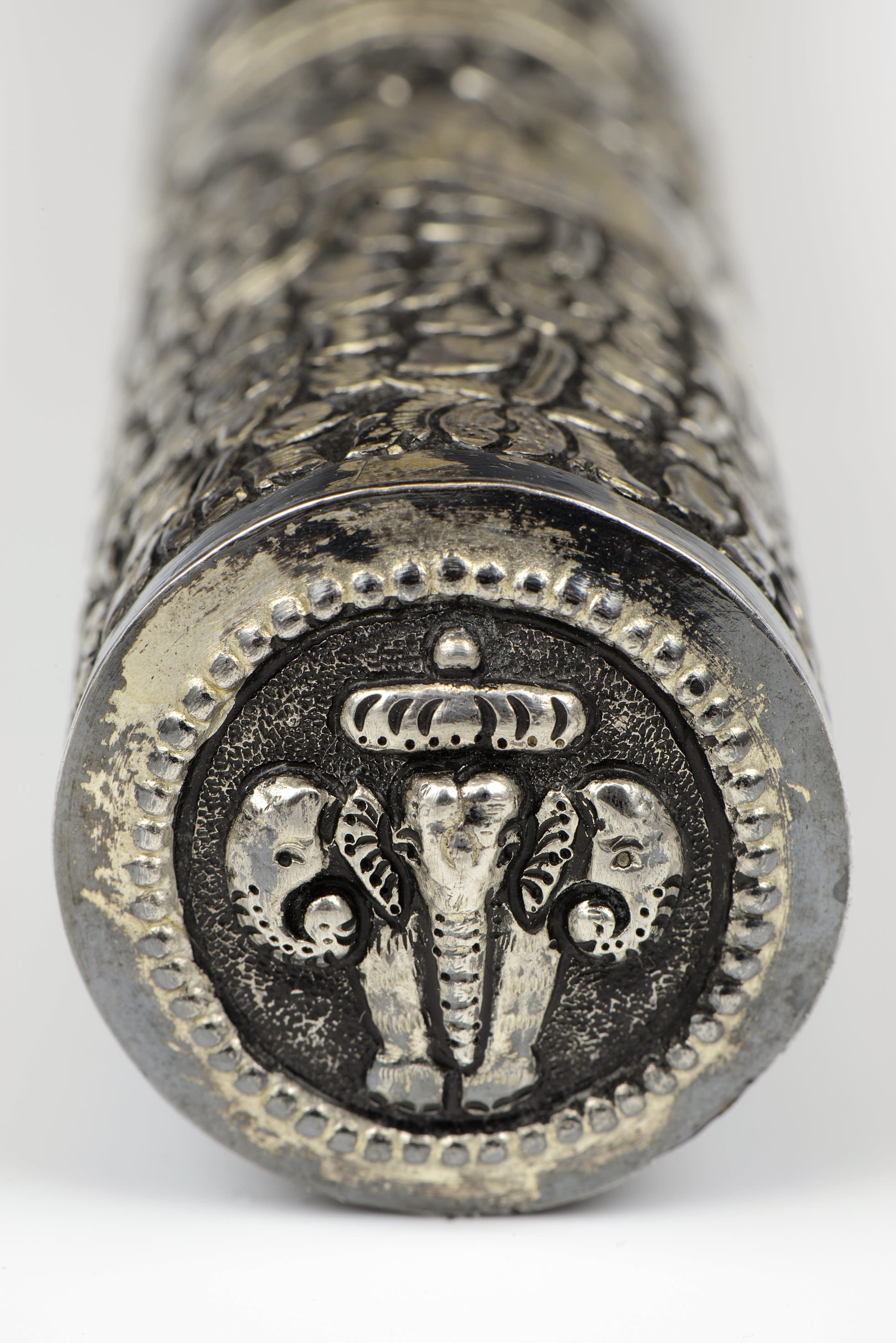
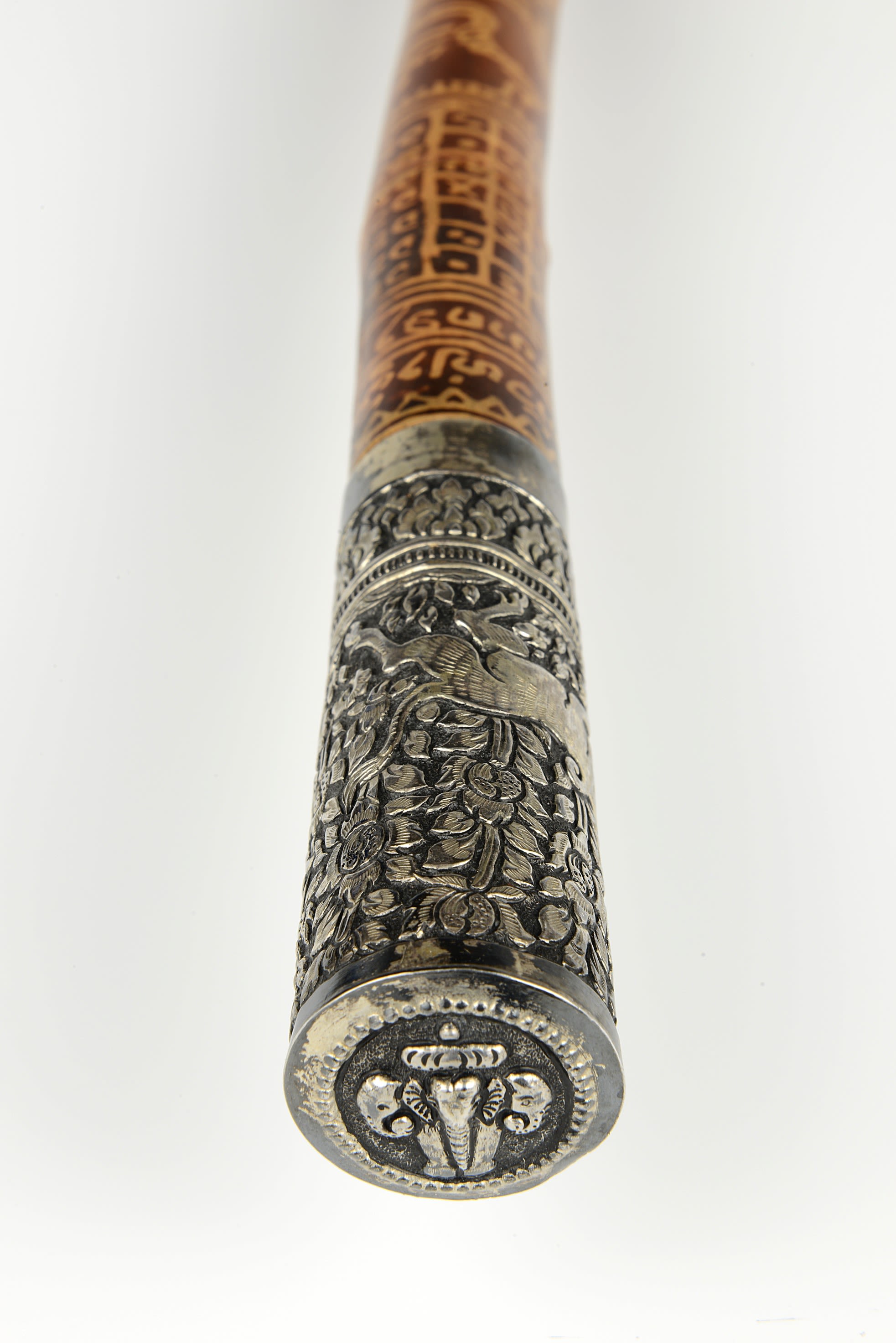
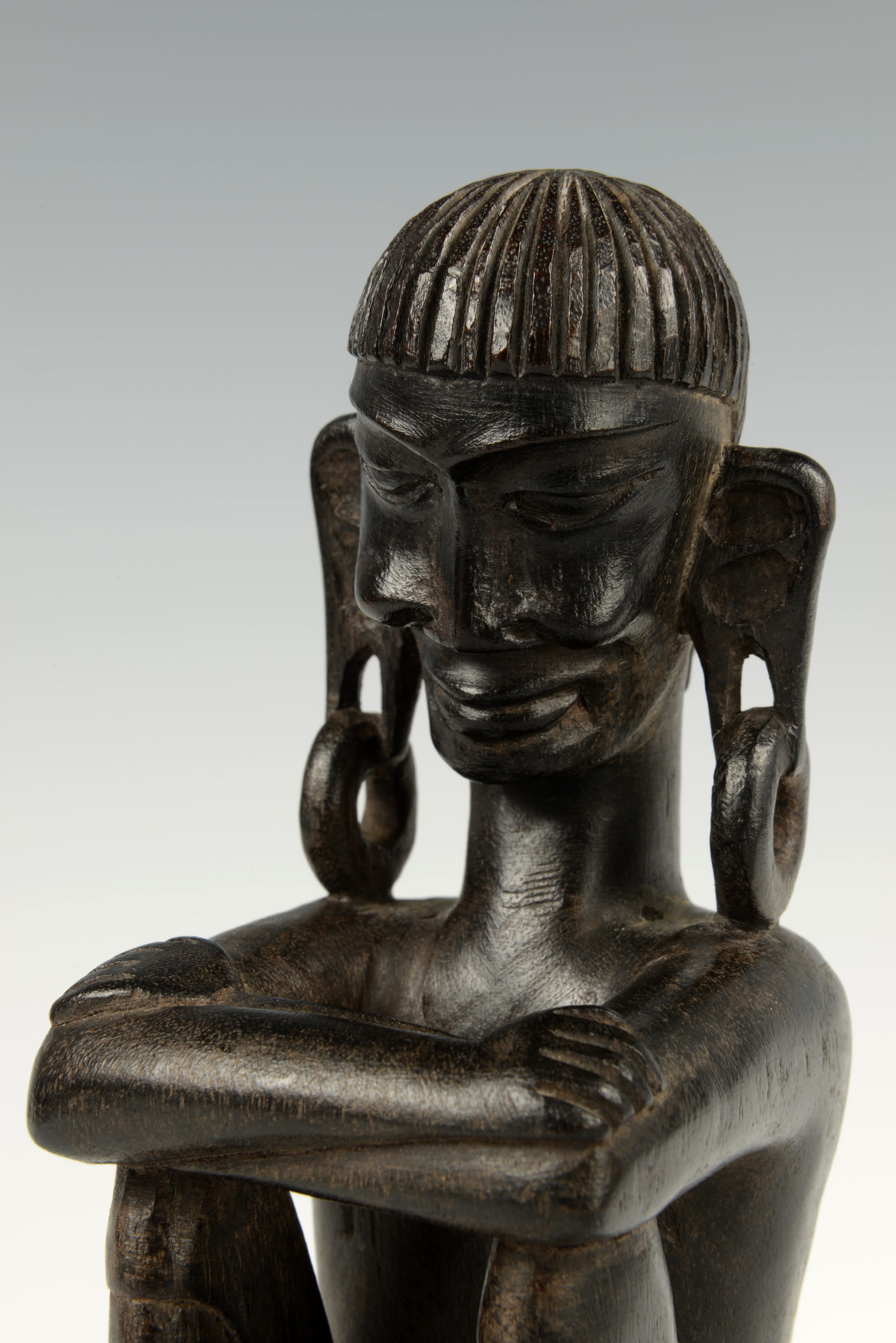
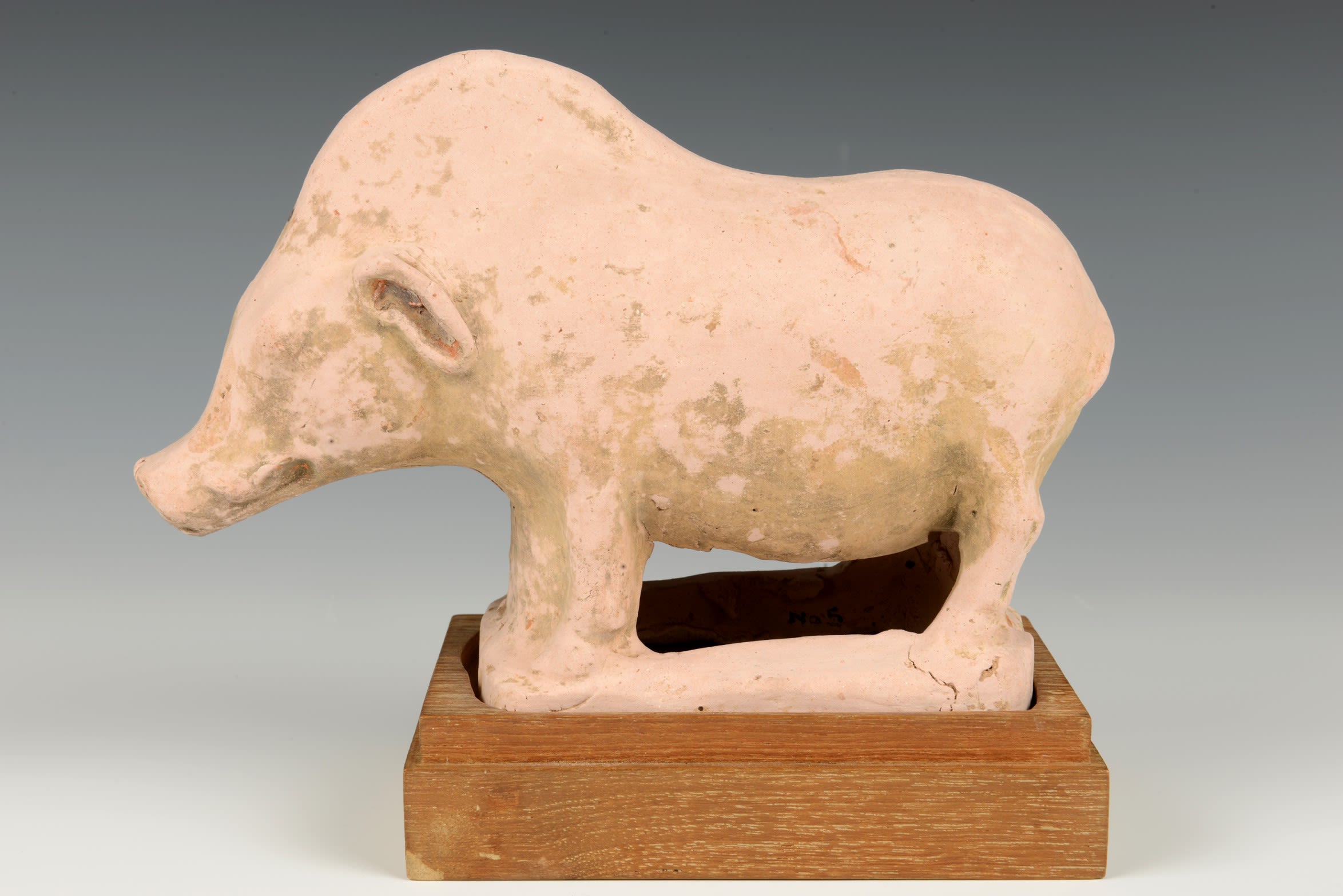
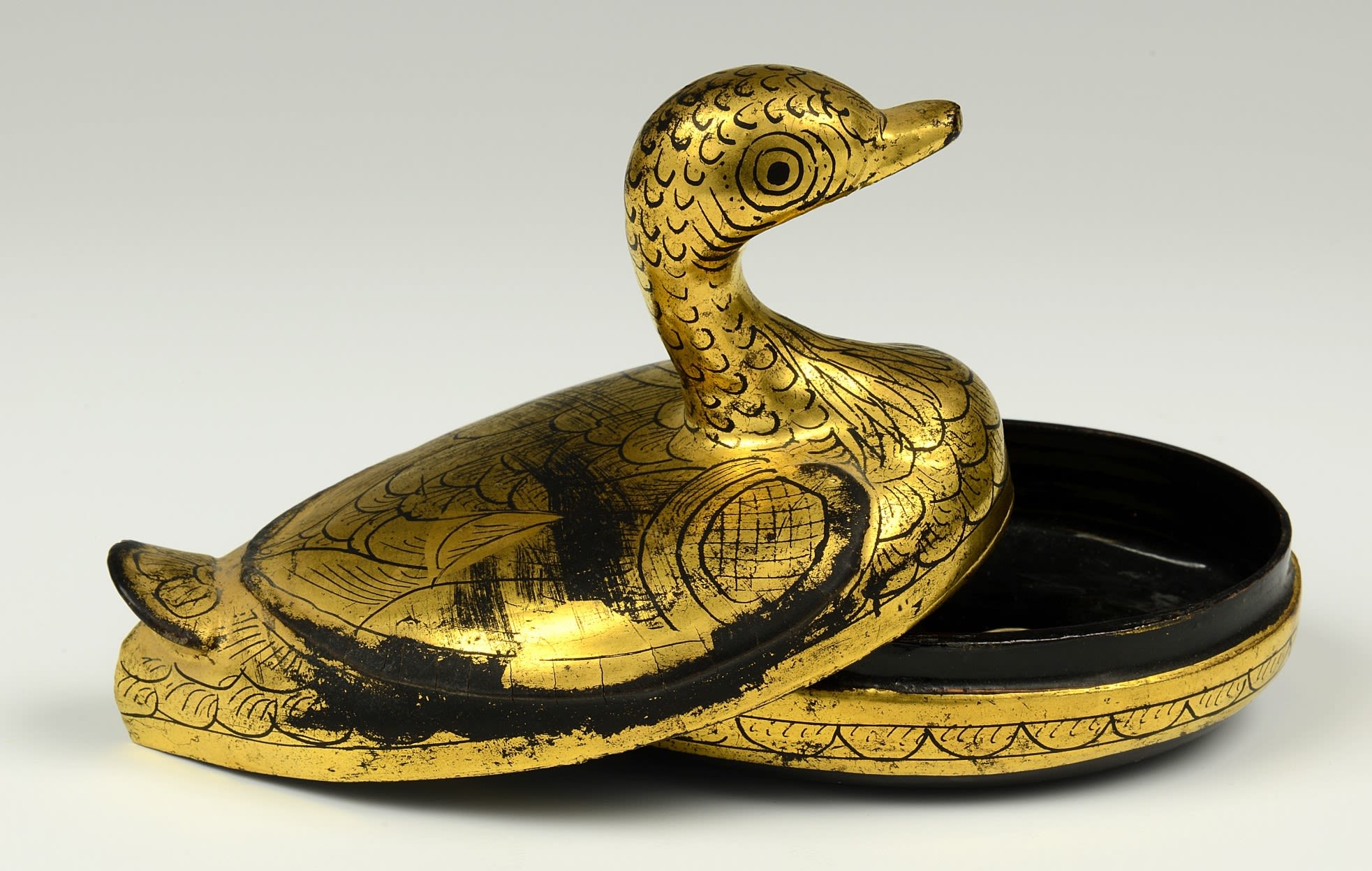
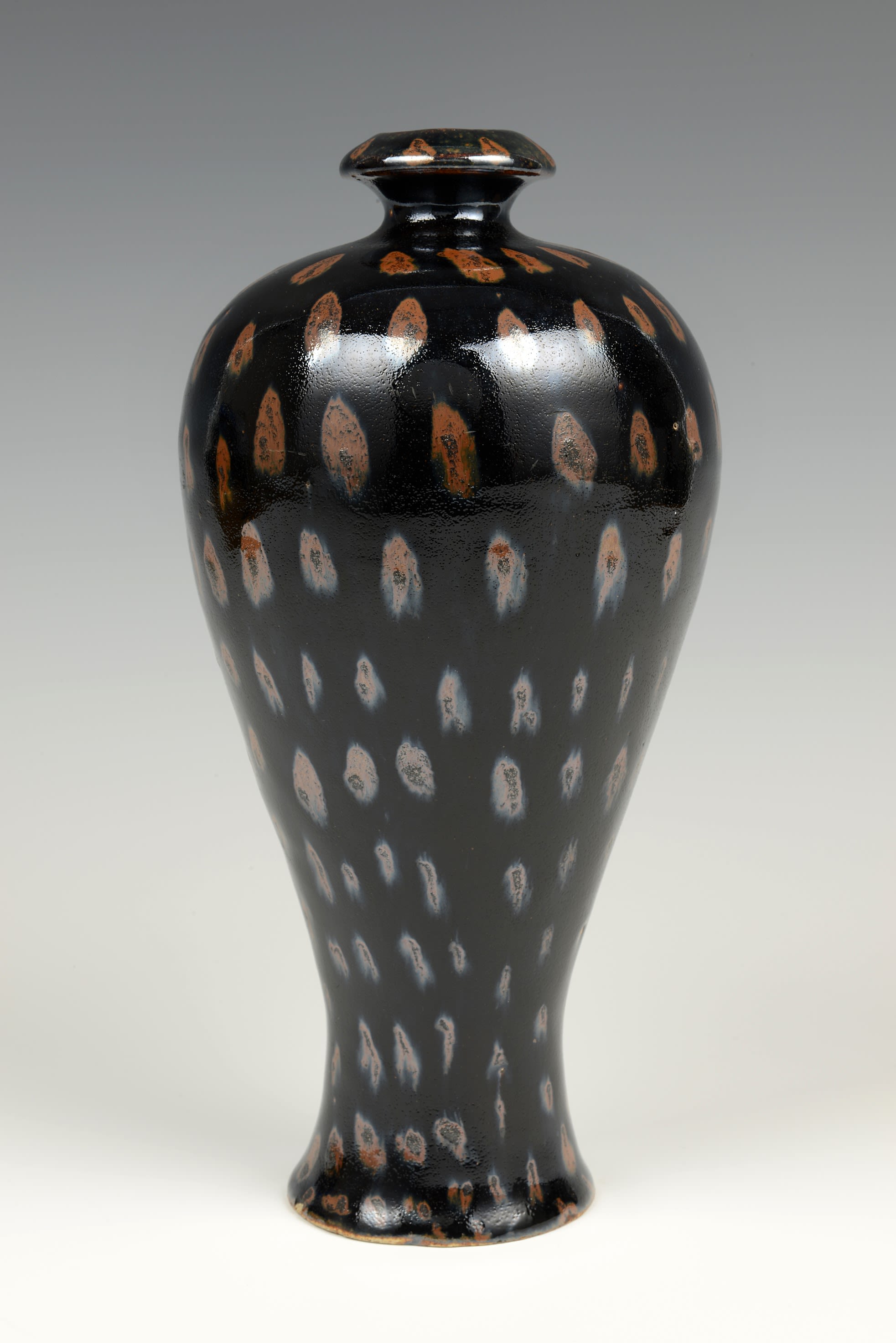

Military baton | Bamboo, silver | Laos, 20th century CE | Malcolm MacDonald Collection, DUROM.1976.144 | This baton would have belonged to an army officer in the Royal Lao Army. Laos was a French colony which became independent in 1953. On the silver knob you can see a triple headed elephant. This was the official symbol of the Kingdom of Laos and its Royal Army until a communist coup in 1975.
Military baton | Bamboo, silver | Laos, 20th century CE | Malcolm MacDonald Collection, DUROM.1976.144 | This baton would have belonged to an army officer in the Royal Lao Army. Laos was a French colony which became independent in 1953. On the silver knob you can see a triple headed elephant. This was the official symbol of the Kingdom of Laos and its Royal Army until a communist coup in 1975.

Military baton | Malcolm was given the baton by one of the many Laotian princes. When the country succumbed to civil war in the early 1960s, Malcolm was chosen to chair an international conference in Geneva to help end the conflict.
Military baton | Malcolm was given the baton by one of the many Laotian princes. When the country succumbed to civil war in the early 1960s, Malcolm was chosen to chair an international conference in Geneva to help end the conflict.

Carving of a Kayan man | Wood | Sarawak, 1950-1960 CE | Malcolm MacDonald Collection, DUROM.1976.125 | This wooden figure depicts a Kayan man from Malaysian Borneo (Sarawak). He wears only a loincloth and has elongated ear lobes with large earrings. This is surprising because ear stretching was usually more prevalent with Kayan women than men.
Carving of a Kayan man | Wood | Sarawak, 1950-1960 CE | Malcolm MacDonald Collection, DUROM.1976.125 | This wooden figure depicts a Kayan man from Malaysian Borneo (Sarawak). He wears only a loincloth and has elongated ear lobes with large earrings. This is surprising because ear stretching was usually more prevalent with Kayan women than men.

Figure of a boar | Earthenware | China, 700-800 CE, Tang dynasty | Malcolm MacDonald Collection, DUROM.1969.32 | This figure of a boar may have reminded Malcolm of his friendship with Ong Tiang Swee, a Chinese businessman in Sarawak. Tiang Swee often invited Malcolm for banquets where the speciality was always roast suckling pig. Throughout his life, Malcolm adored Chinese food.
Figure of a boar | Earthenware | China, 700-800 CE, Tang dynasty | Malcolm MacDonald Collection, DUROM.1969.32 | This figure of a boar may have reminded Malcolm of his friendship with Ong Tiang Swee, a Chinese businessman in Sarawak. Tiang Swee often invited Malcolm for banquets where the speciality was always roast suckling pig. Throughout his life, Malcolm adored Chinese food.

Lacquer box | Myanmar (Burma), 1900-1950 CE | Malcolm MacDonald Collection, DUROM.1979.34 | Malcolm MacDonald visited Burma regularly during the 1940s and 1950s. Whilst off duty in Burma, Malcolm enjoyed discovering the artistic skill of the Burmese craftsmen. He particularly admired the beauty of small, highly intricate lacquer boxes such as this example.
Lacquer box | Myanmar (Burma), 1900-1950 CE | Malcolm MacDonald Collection, DUROM.1979.34 | Malcolm MacDonald visited Burma regularly during the 1940s and 1950s. Whilst off duty in Burma, Malcolm enjoyed discovering the artistic skill of the Burmese craftsmen. He particularly admired the beauty of small, highly intricate lacquer boxes such as this example.

Vase | Stoneware | Japan, 1900-1950 CE | Malcolm MacDonald Collection, DUROM.1969.80 | This pretends to be a Henan ware vase from Song dynasty China. However, it is a fake produced in Japan during the early twentieth century. Although Malcolm MacDonald was a connoisseur of Chinese ceramics, he still made the occasional mistake. These did not dishearten Malcolm but instead helped him to improve his knowledge. Throughout his life, collecting was as much about the pursuit of knowledge as the pursuit of beauty.
Vase | Stoneware | Japan, 1900-1950 CE | Malcolm MacDonald Collection, DUROM.1969.80 | This pretends to be a Henan ware vase from Song dynasty China. However, it is a fake produced in Japan during the early twentieth century. Although Malcolm MacDonald was a connoisseur of Chinese ceramics, he still made the occasional mistake. These did not dishearten Malcolm but instead helped him to improve his knowledge. Throughout his life, collecting was as much about the pursuit of knowledge as the pursuit of beauty.







Military baton | Bamboo, silver | Laos, 20th century CE | Malcolm MacDonald Collection, DUROM.1976.144 | Laos was a French colony which became independent in 1953. On the silver knob you can see a triple headed elephant, the official symbol of the Kingdom of Laos and its Royal Army until a communist coup in 1975.
Military baton | Bamboo, silver | Laos, 20th century CE | Malcolm MacDonald Collection, DUROM.1976.144 | Laos was a French colony which became independent in 1953. On the silver knob you can see a triple headed elephant, the official symbol of the Kingdom of Laos and its Royal Army until a communist coup in 1975.

Military baton | Malcolm was given the baton by one of the many Laotian princes. When the country succumbed to civil war in the early 1960s, Malcolm was chosen to chair an international conference in Geneva to help end the conflict.
Military baton | Malcolm was given the baton by one of the many Laotian princes. When the country succumbed to civil war in the early 1960s, Malcolm was chosen to chair an international conference in Geneva to help end the conflict.

Carving of a Kayan man | Wood | Sarawak, 1950-1960 CE | Malcolm MacDonald Collection, DUROM.1976.125 | This wooden figure wears only a loincloth and has elongated ear lobes with large earrings. Ear stretching was usually more prevalent with Kayan women than men.
Carving of a Kayan man | Wood | Sarawak, 1950-1960 CE | Malcolm MacDonald Collection, DUROM.1976.125 | This wooden figure wears only a loincloth and has elongated ear lobes with large earrings. Ear stretching was usually more prevalent with Kayan women than men.

Figure of a boar | Earthenware | China, 700-800 CE, Tang dynasty | Malcolm MacDonald Collection, DUROM.1969.32 | This figure of a boar may have reminded Malcolm of his friendship with Ong Tiang Swee, a Chinese businessman in Sarawak. Tiang Swee often invited Malcolm for banquets where the speciality was always roast suckling pig. Throughout his life, Malcolm adored Chinese food.
Figure of a boar | Earthenware | China, 700-800 CE, Tang dynasty | Malcolm MacDonald Collection, DUROM.1969.32 | This figure of a boar may have reminded Malcolm of his friendship with Ong Tiang Swee, a Chinese businessman in Sarawak. Tiang Swee often invited Malcolm for banquets where the speciality was always roast suckling pig. Throughout his life, Malcolm adored Chinese food.

Lacquer box | Myanmar (Burma), 1900-1950 CE | Malcolm MacDonald Collection, DUROM.1979.34 | Malcolm MacDonald visited Burma regularly during the 1940s and 1950s. Whilst off duty in Burma, Malcolm enjoyed discovering the artistic skill of the Burmese craftsmen. He particularly admired the beauty of small, highly intricate lacquer boxes such as this example.
Lacquer box | Myanmar (Burma), 1900-1950 CE | Malcolm MacDonald Collection, DUROM.1979.34 | Malcolm MacDonald visited Burma regularly during the 1940s and 1950s. Whilst off duty in Burma, Malcolm enjoyed discovering the artistic skill of the Burmese craftsmen. He particularly admired the beauty of small, highly intricate lacquer boxes such as this example.

Vase | Stoneware | Japan, 1900-1950 CE | Malcolm MacDonald Collection, DUROM.1969.80 | This pretends to be a Henan ware vase from Song dynasty China but is actually a fake produced in Japan during the early twentieth century. Although Malcolm was a connoisseur, he still made the occasional mistake.
Vase | Stoneware | Japan, 1900-1950 CE | Malcolm MacDonald Collection, DUROM.1969.80 | This pretends to be a Henan ware vase from Song dynasty China but is actually a fake produced in Japan during the early twentieth century. Although Malcolm was a connoisseur, he still made the occasional mistake.
The three Chinese ceramics below tell the story of Malcolm MacDonald’s changing tastes as a collector.
Upon first arriving in Singapore, Malcolm began collecting export wares of a lesser artistic quality than imperial ceramics, mostly from the Ming or Qing dynasties.
This plate with its many colours and flowery design represents Malcolm’s more westernised tastes from this period of his life. Its colourful design is reminiscent of European ceramics which he first started collecting as a young man in his twenties.
Swatow ware plate | Porcelain | China, 1750-1799 CE, Qing dynasty | Malcolm MacDonald Collection, DUROM.1969.238.C
Malcolm was introduced to imperial Chinese ceramics by his friend Dato ‘S. Q.’ Wong, a wealthy Chinese businessman and community leader in Singapore.
‘S. Q.’ presented Malcolm with this slightly chipped Junware bowl. Dating from the Song dynasty, ‘S. Q.’ hoped this gift would introduce Malcolm to earlier types of Chinese ceramic which embodied a much simpler form of beauty.
Chipped Junware bowl | Stoneware | China, 1260-1368 CE, Yuan dynasty | Malcolm MacDonald Collection, DUROM.1969.96
After some time, ‘S. Q.’s plan worked and Malcom came to prefer Song dynasty creations because of their technical perfection. He particularly loved Longquan Ware.
This is a type of green glazed Chinese ceramic often known as celadon. His tastes had developed away from the more westernised and familiar to a true appreciation of the Chinese conception of artistic beauty.
Longquan ware jar | Stoneware | China, 1200-1300 CE, Song dynasty | Malcolm MacDonald Collection, DUROM.1969.107
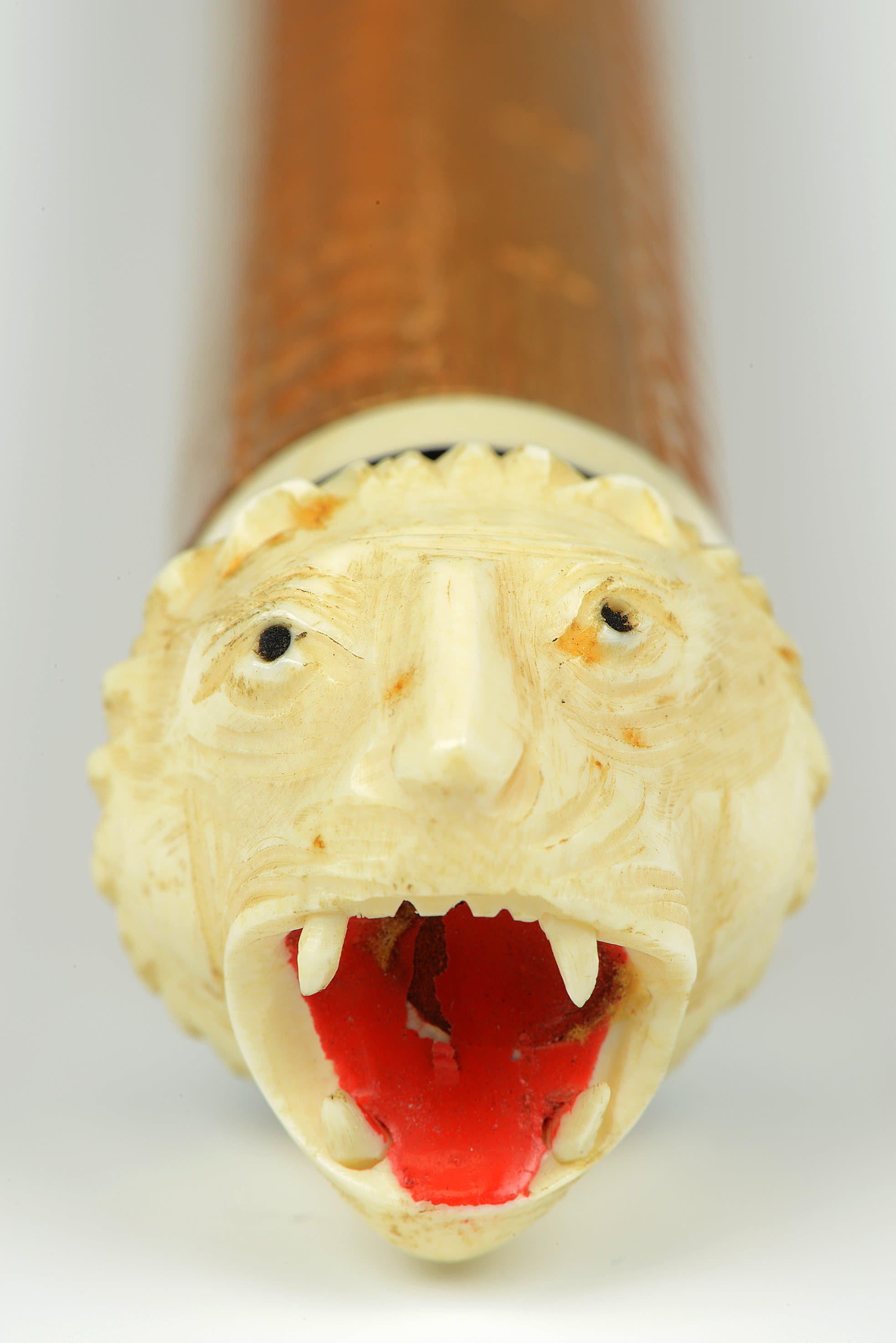
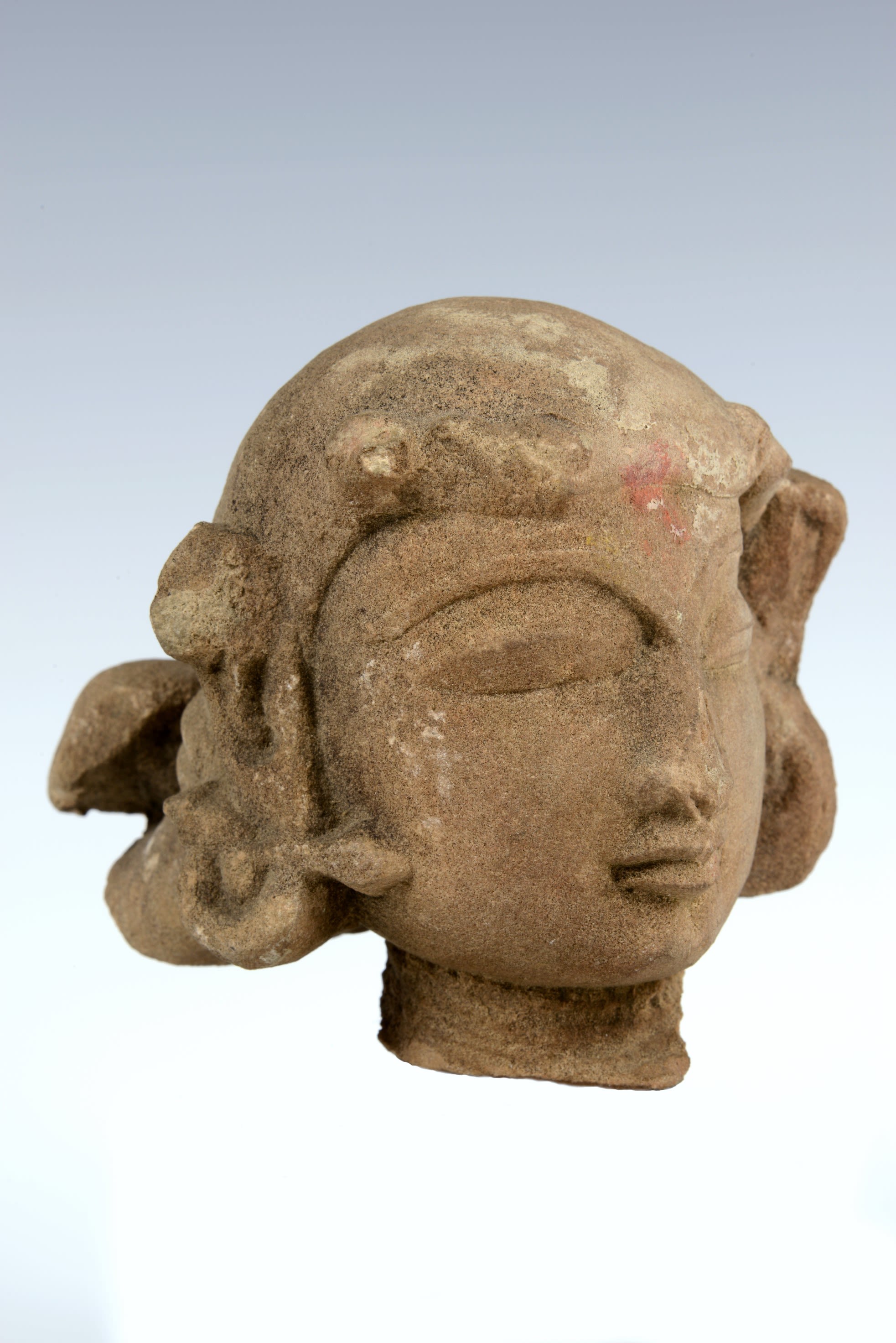
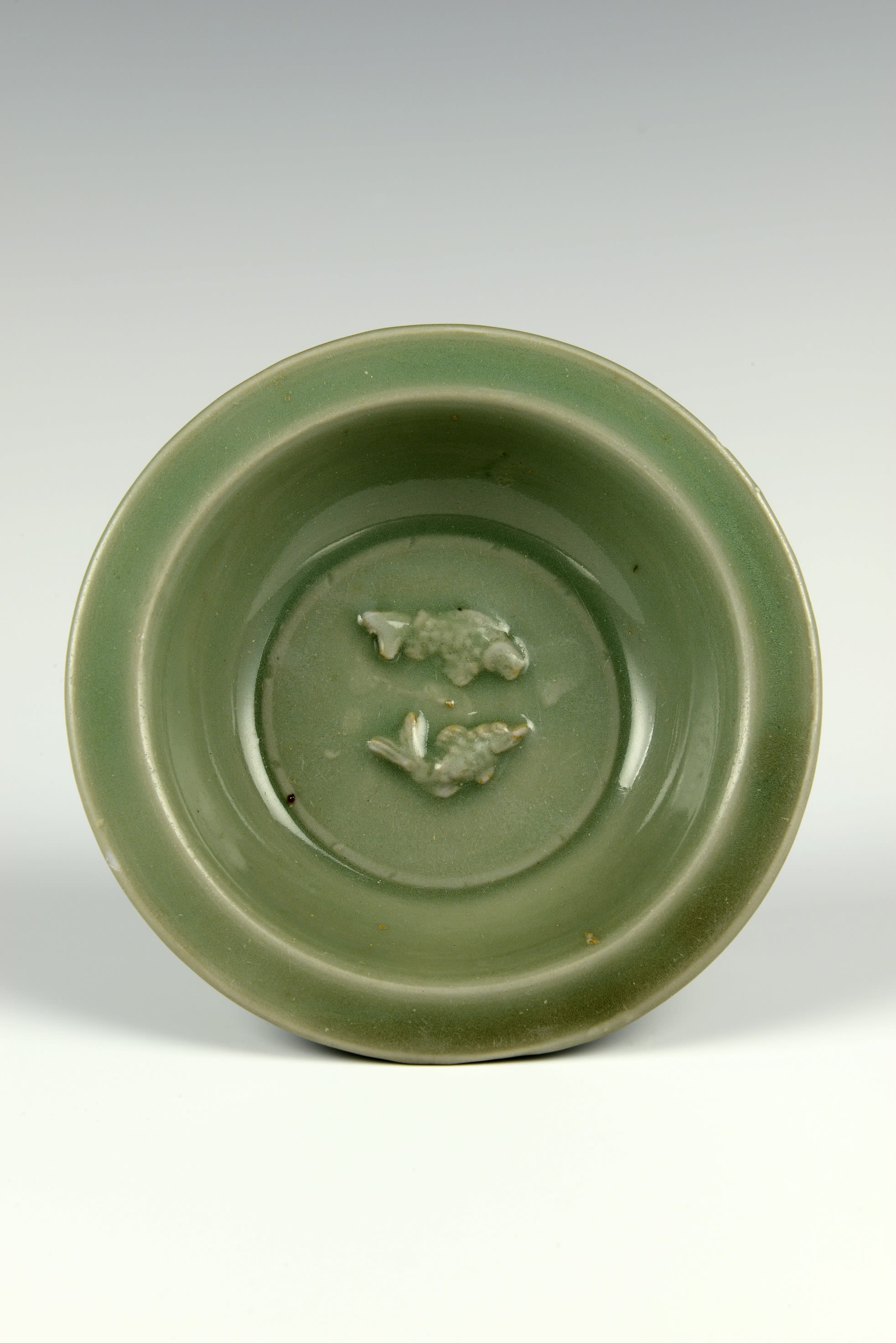
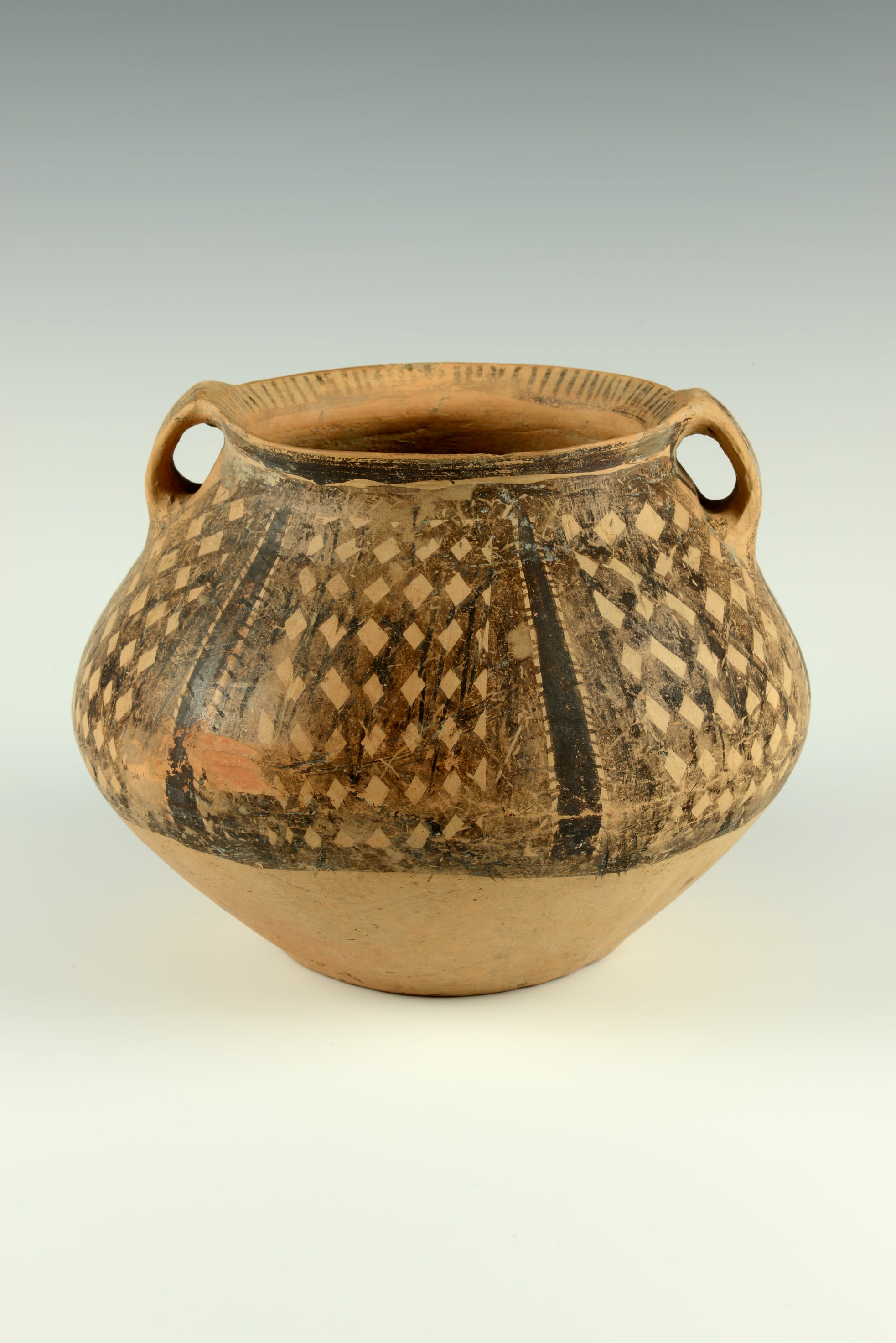
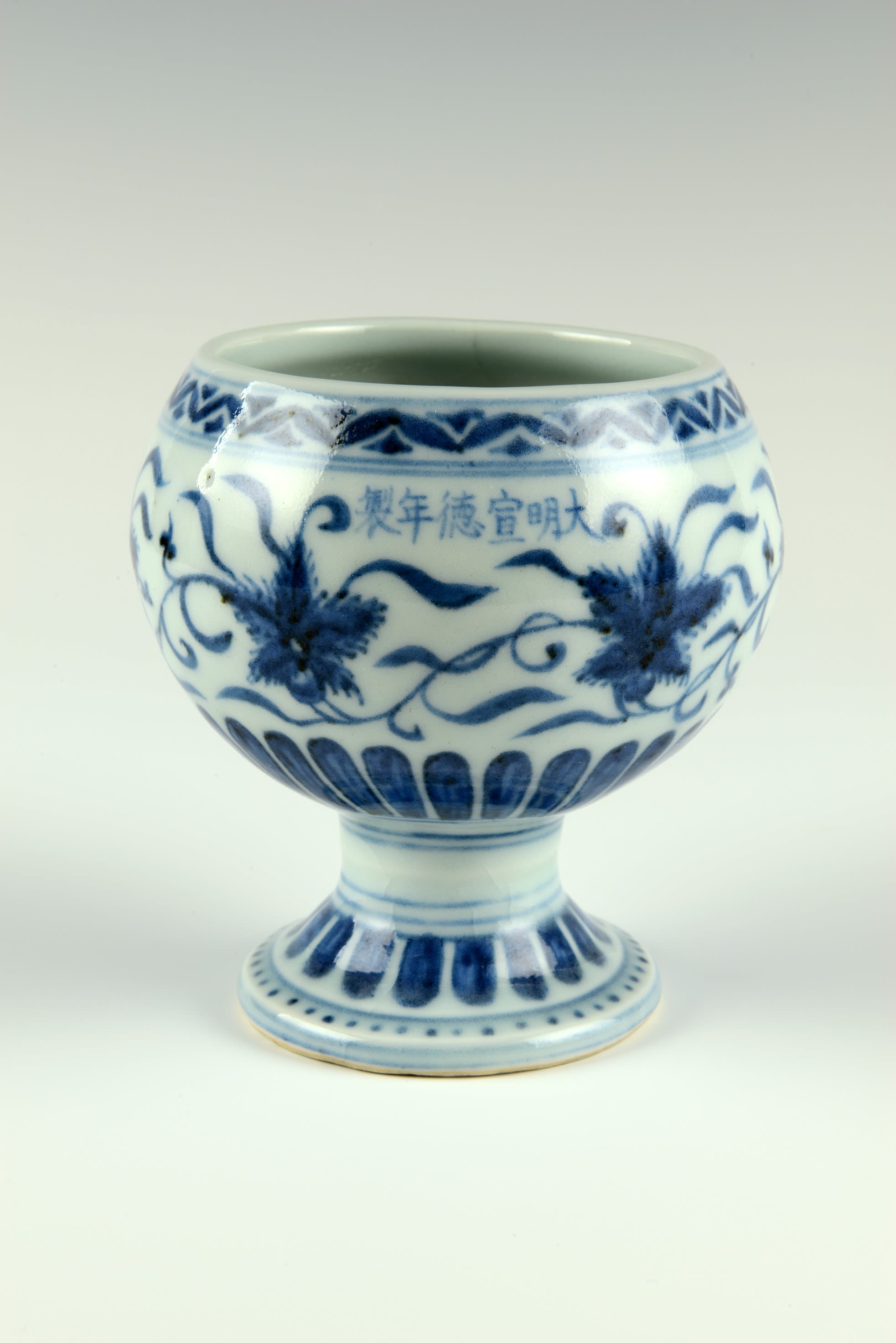

Ceremonial Stick | Wood & ivory | India, 1900-1960 CE | MacDonald Collection, DUROM.1980.54 | Malcolm MacDonald collected numerous sticks and canes from around the globe during the course of his diplomatic career. This example was carved in India.
Ceremonial Stick | Wood & ivory | India, 1900-1960 CE | MacDonald Collection, DUROM.1980.54 | Malcolm MacDonald collected numerous sticks and canes from around the globe during the course of his diplomatic career. This example was carved in India.

Female Head | Sandstone | India, Pala Empire, 1000-1100 CE | MacDonald Collection, DUROM.1969.347 | Whilst MacDonald was based in Delhi as High Commissioner he acquired several examples of ancient Indian sculpture including this piece in Chandella style.
Female Head | Sandstone | India, Pala Empire, 1000-1100 CE | MacDonald Collection, DUROM.1969.347 | Whilst MacDonald was based in Delhi as High Commissioner he acquired several examples of ancient Indian sculpture including this piece in Chandella style.

Dish | Stoneware with blue-green glaze and applied-relief decoration | China, Zhejiang province, Longquan | Song dynasty, 960-1279 CE | Macdonald Collection, DUROM.1969.104.C | MacDonald believed that ceramics produced during the Song dynasty were the finest examples of Chinese ceramics. This raised applique decoration seen on this dish is often found in early Longquan celadon wares from this period.
Dish | Stoneware with blue-green glaze and applied-relief decoration | China, Zhejiang province, Longquan | Song dynasty, 960-1279 CE | Macdonald Collection, DUROM.1969.104.C | MacDonald believed that ceramics produced during the Song dynasty were the finest examples of Chinese ceramics. This raised applique decoration seen on this dish is often found in early Longquan celadon wares from this period.

Jar | Earthenware painted in red and dark-brown | China, Gansu province | Majiayao Culture, Banshan phase, 2800 - 2500 BCE | Macdonald Collection, DUROM.1969.251 | MacDonald’s collection primarily focused on ceramics produced from the Yuan to the Qing dynasty but he acquired this Neolithic jar to help address a chronological gap in his collection.
Jar | Earthenware painted in red and dark-brown | China, Gansu province | Majiayao Culture, Banshan phase, 2800 - 2500 BCE | Macdonald Collection, DUROM.1969.251 | MacDonald’s collection primarily focused on ceramics produced from the Yuan to the Qing dynasty but he acquired this Neolithic jar to help address a chronological gap in his collection.

Dou vessel stem cup | Porcelain with underglaze blue decoration | China, Jiangxi province, Jingdezhen | Ming dynasty, Xuande reign, 1425-1435 CE | Macdonald Collection, DUROM.1969.341 | Blue and white ceramics are perhaps the best known of Chinese ceramics and MacDonald collected a number of fine examples. This cup dates to the Xuande reign when blue and white porcelain reached it’s height in terms of quality and style.
Dou vessel stem cup | Porcelain with underglaze blue decoration | China, Jiangxi province, Jingdezhen | Ming dynasty, Xuande reign, 1425-1435 CE | Macdonald Collection, DUROM.1969.341 | Blue and white ceramics are perhaps the best known of Chinese ceramics and MacDonald collected a number of fine examples. This cup dates to the Xuande reign when blue and white porcelain reached it’s height in terms of quality and style.

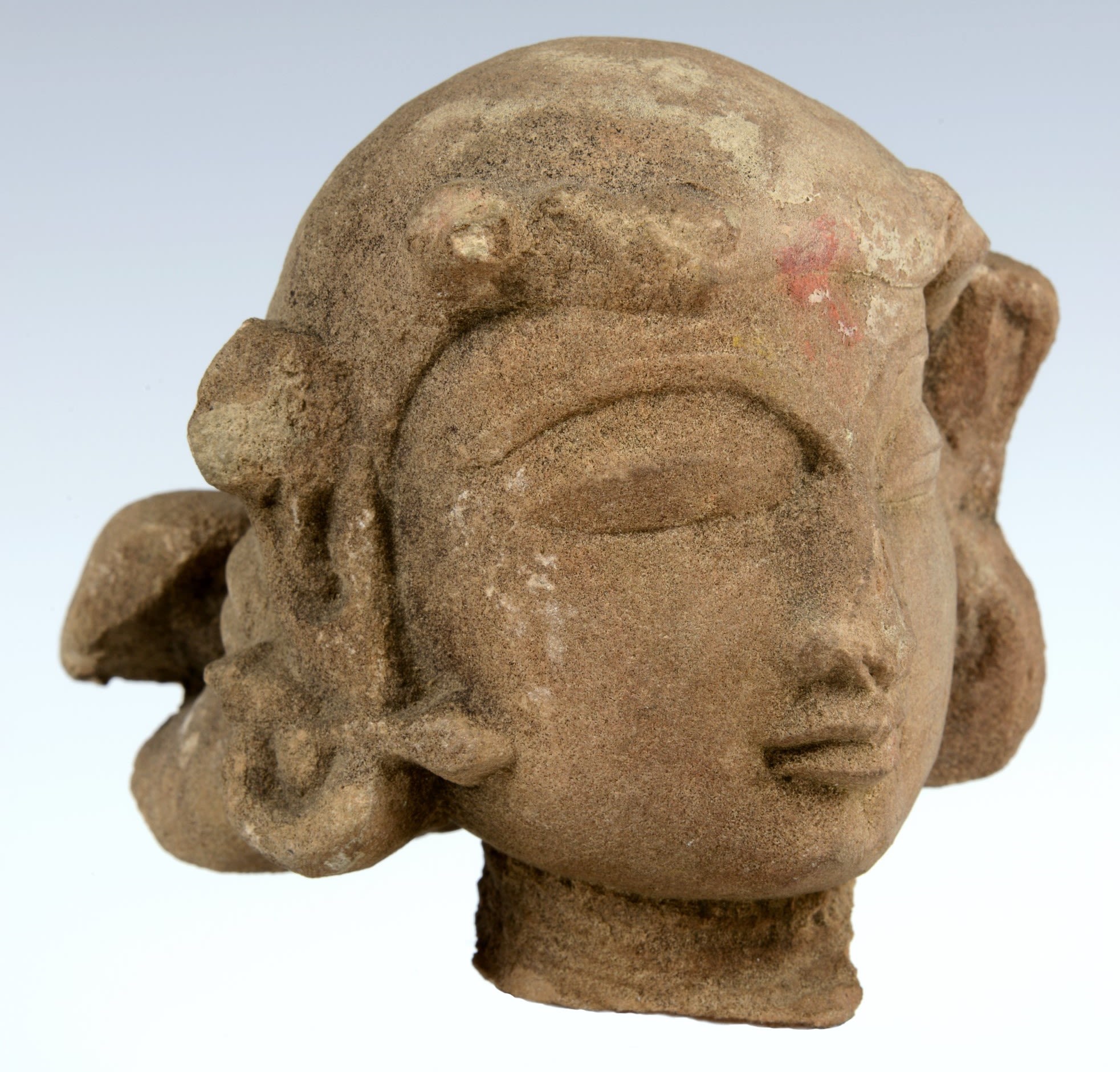
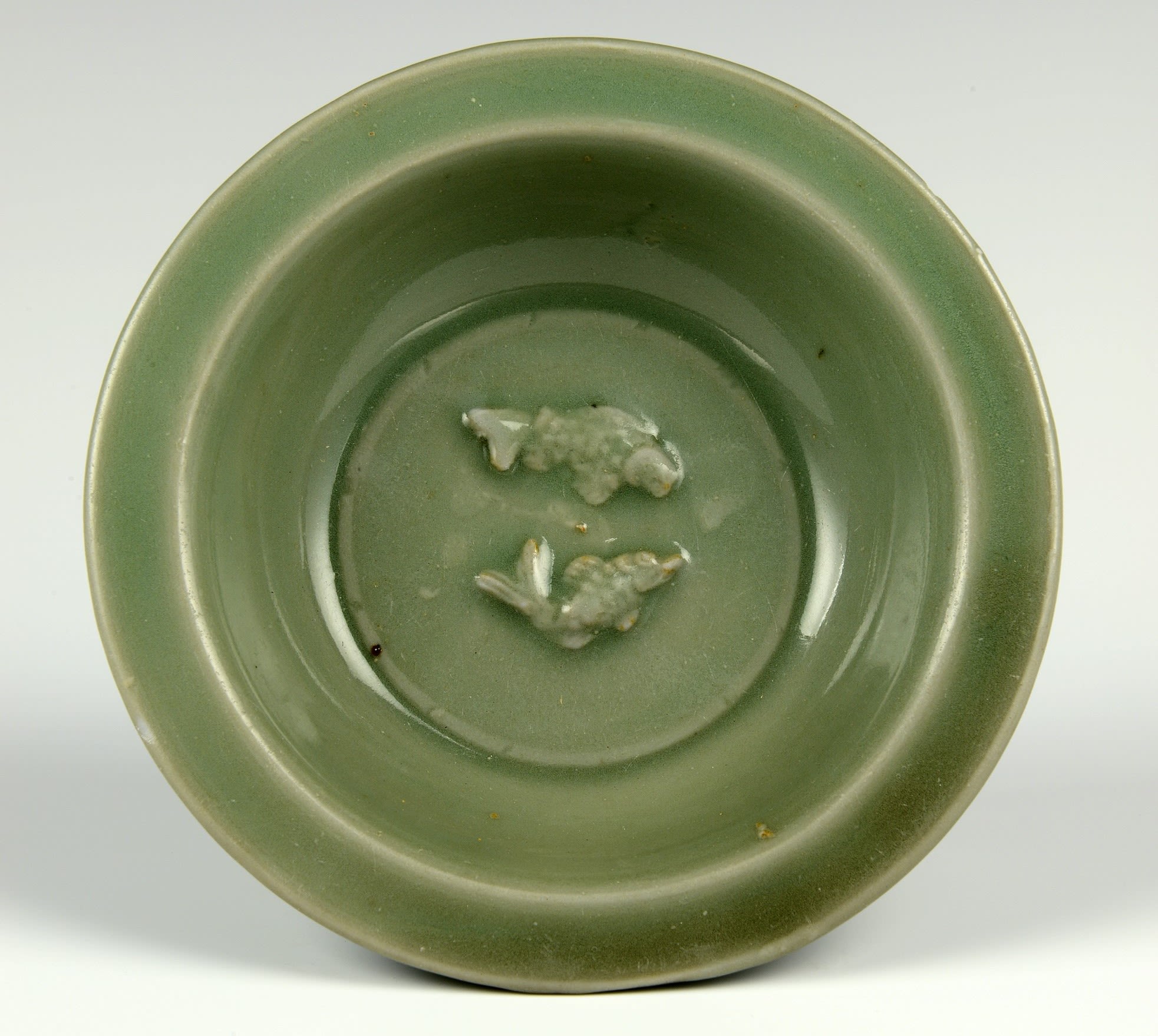
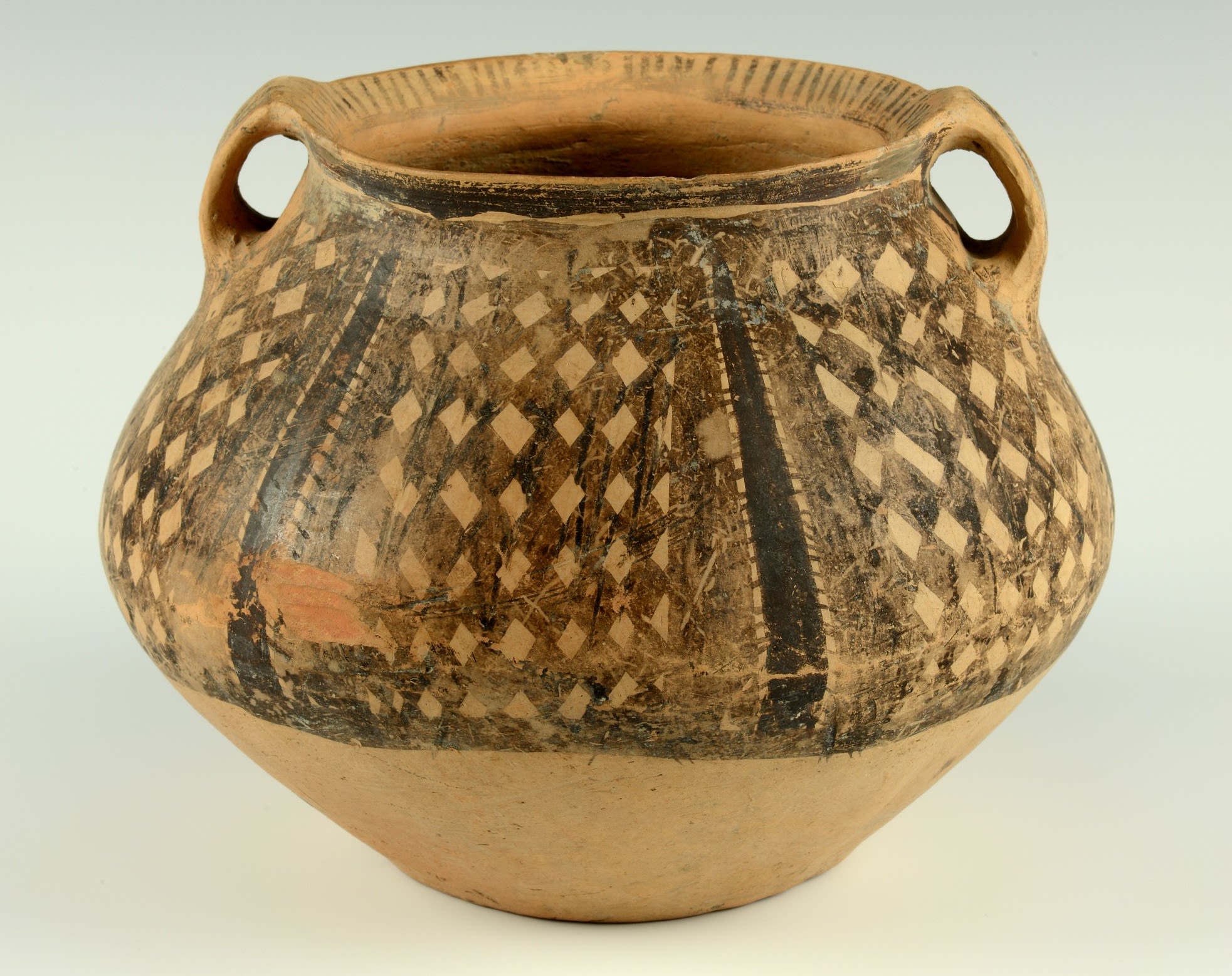
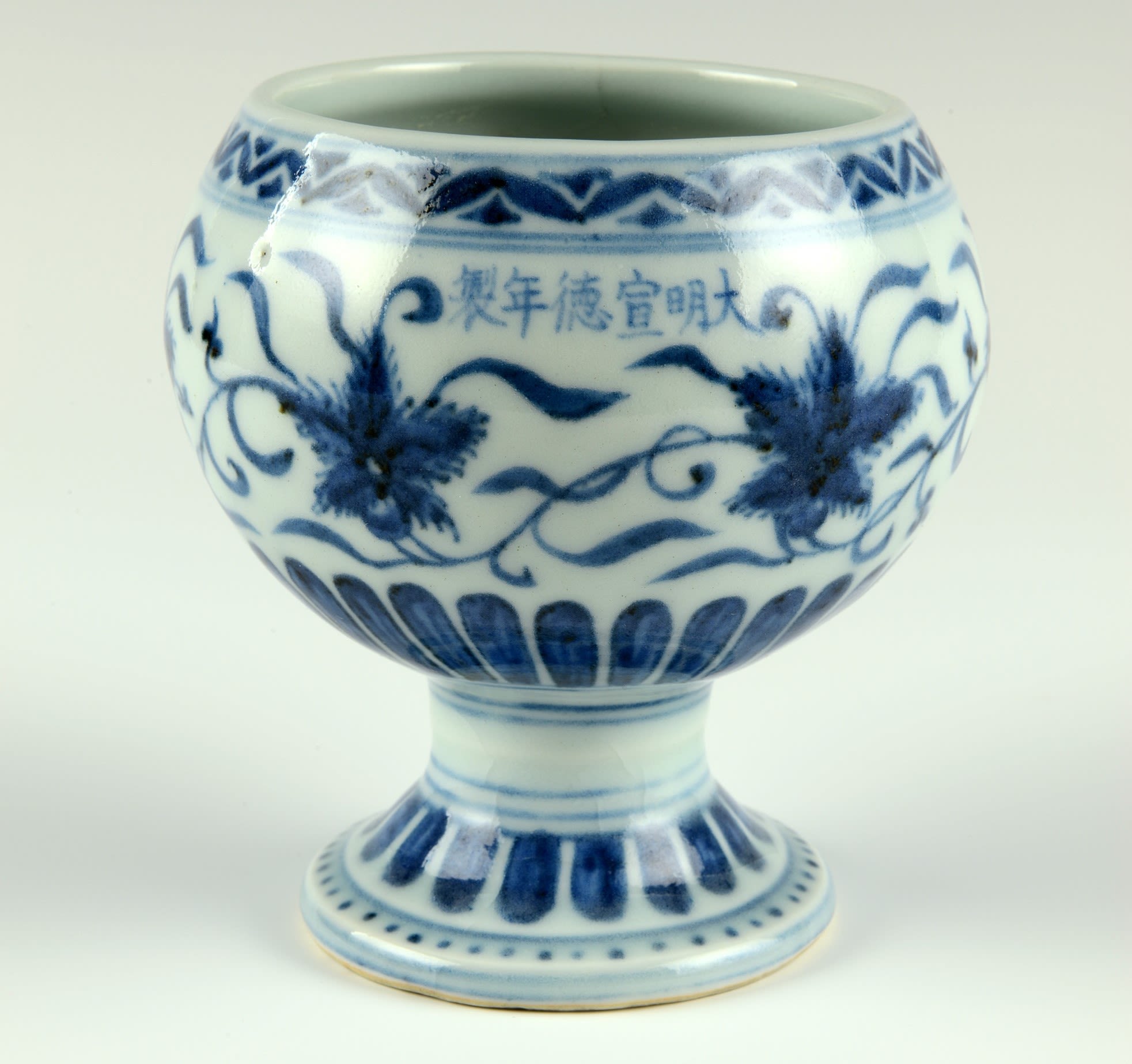

Ceremonial Stick | Wood & ivory | India, 1900-1960 CE | DUROM.1980.54 | Malcolm collected numerous sticks and canes from around the globe during the course of his diplomatic career. This example was carved in India.
Ceremonial Stick | Wood & ivory | India, 1900-1960 CE | DUROM.1980.54 | Malcolm collected numerous sticks and canes from around the globe during the course of his diplomatic career. This example was carved in India.

Female Head | Sandstone | India, Pala Empire, 1000-1100 CE | DUROM.1969.347 | Whilst MacDonald was based in Delhi as High Commissioner he acquired several examples of ancient Indian sculpture including this piece in Chandella style.
Female Head | Sandstone | India, Pala Empire, 1000-1100 CE | DUROM.1969.347 | Whilst MacDonald was based in Delhi as High Commissioner he acquired several examples of ancient Indian sculpture including this piece in Chandella style.

Dish | Stoneware with blue-green glaze | China, Zhejiang province, Longquan | Song dynasty, 960-1279 CE | DUROM.1969.104.C | MacDonald believed that ceramics produced in this period were the finest examples of Chinese ceramics. This raised decoration is often found in Longquan celadon wares from this period.
Dish | Stoneware with blue-green glaze | China, Zhejiang province, Longquan | Song dynasty, 960-1279 CE | DUROM.1969.104.C | MacDonald believed that ceramics produced in this period were the finest examples of Chinese ceramics. This raised decoration is often found in Longquan celadon wares from this period.

Jar | Earthenware | China, Gansu province | Majiayao Culture, Banshan phase, 2800 - 2500 BCE | DUROM.1969.251 | MacDonald acquired this Neolithic jar to help address a chronological gap in his collection.
Jar | Earthenware | China, Gansu province | Majiayao Culture, Banshan phase, 2800 - 2500 BCE | DUROM.1969.251 | MacDonald acquired this Neolithic jar to help address a chronological gap in his collection.

Dou vessel stem cup | Porcelain | China, Jiangxi province, Jingdezhen | Ming dynasty, Xuande reign, 1425-1435 CE | DUROM.1969.341 | Blue and white ceramics are perhaps the best known of Chinese ceramics and MacDonald collected a number of fine examples. This cup marks the height of quality of this style.
Dou vessel stem cup | Porcelain | China, Jiangxi province, Jingdezhen | Ming dynasty, Xuande reign, 1425-1435 CE | DUROM.1969.341 | Blue and white ceramics are perhaps the best known of Chinese ceramics and MacDonald collected a number of fine examples. This cup marks the height of quality of this style.
I found it foolish to buy dull bits of paper which would be hidden away in drawers when I could purchase instead beautiful objects to delight the eye in my rooms.
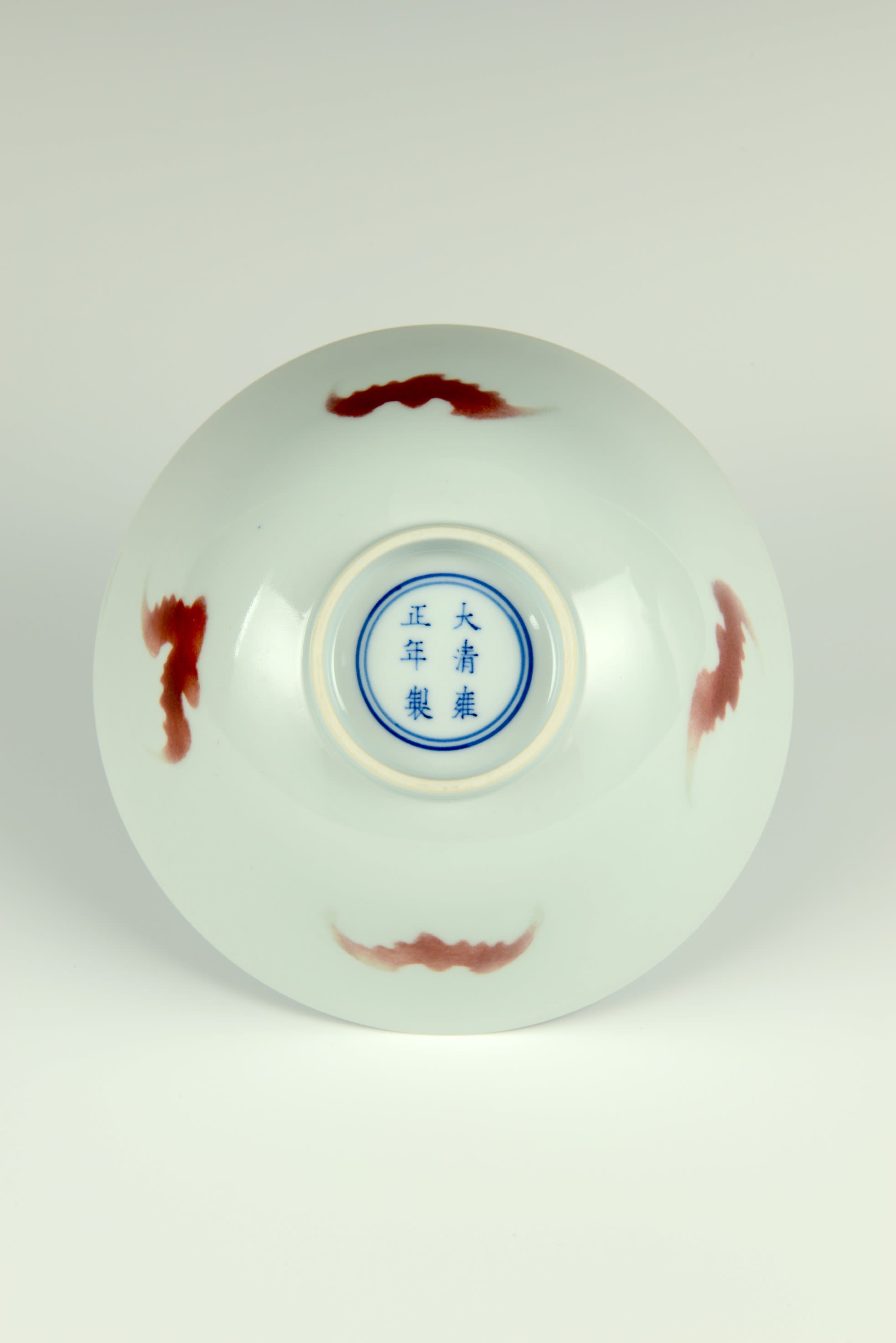
Acknowledgements
This exhibition was originally curated by Alexander Nicholas Shaw in partnership with the Oriental Museum.
Beauty and Diplomacy would not have been possible without the hard work of the entire team at the Oriental Museum. Special thanks are due to Helen Armstrong, Craig Barclay, Rachel Barclay, Carolyn Gaw, Julia Oliver, Gill Ramsay, Mel Smith and Phil Smith.
We are also grateful to Dr Victoria Bagshaw and Palace Green Library for providing many of the images used in this exhibition.
In creating this exhibition we have been greatly inspired by Malcolm’s own thoughts about his collections and how they should be displayed. We have tried to tell both the story of Malcolm’s life, and also the stories from his collections which he most wanted to be told.
The original purchase of Malcolm’s collection of Chinese ceramics was funded by many generous public and private benefactors.
